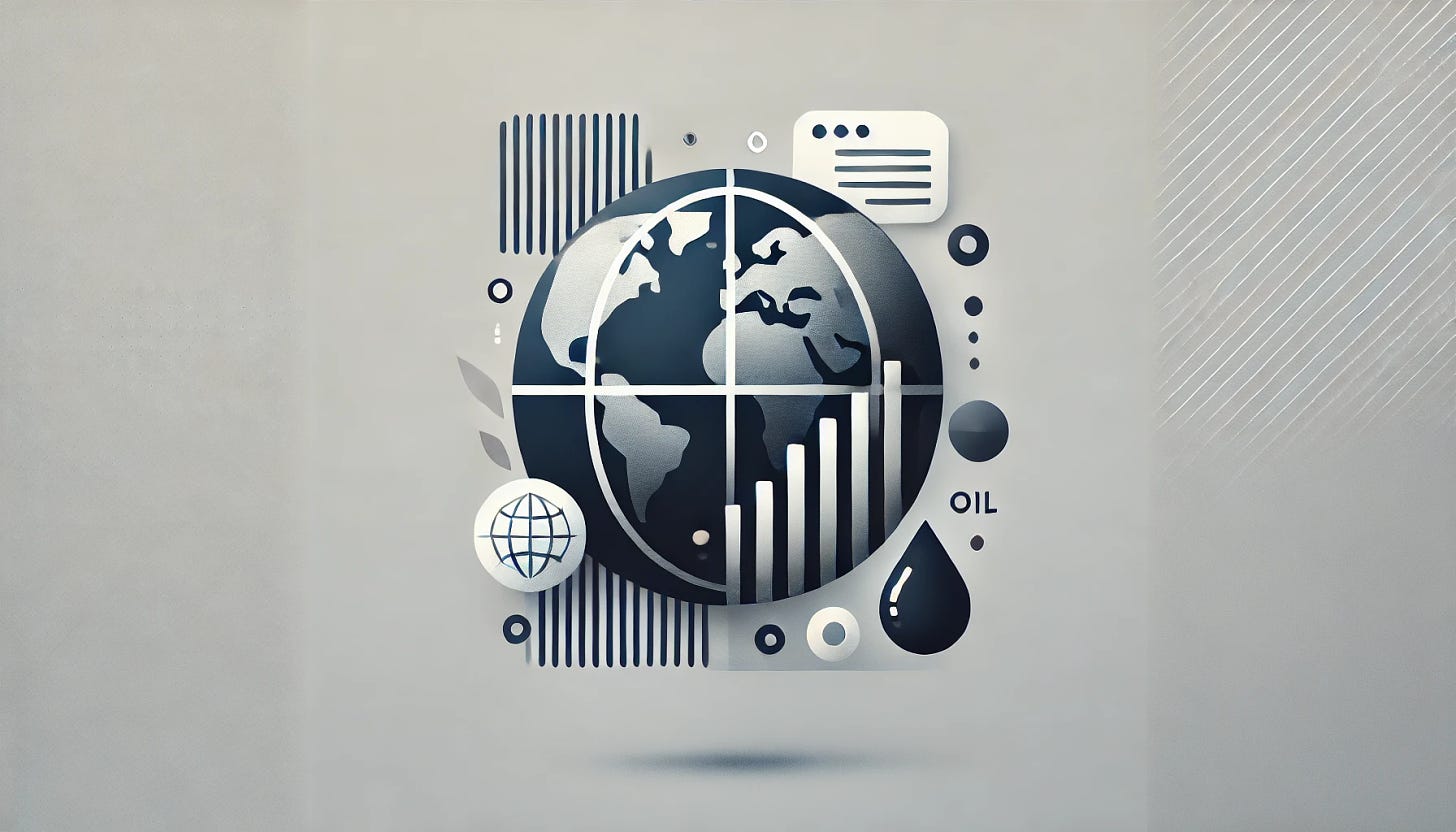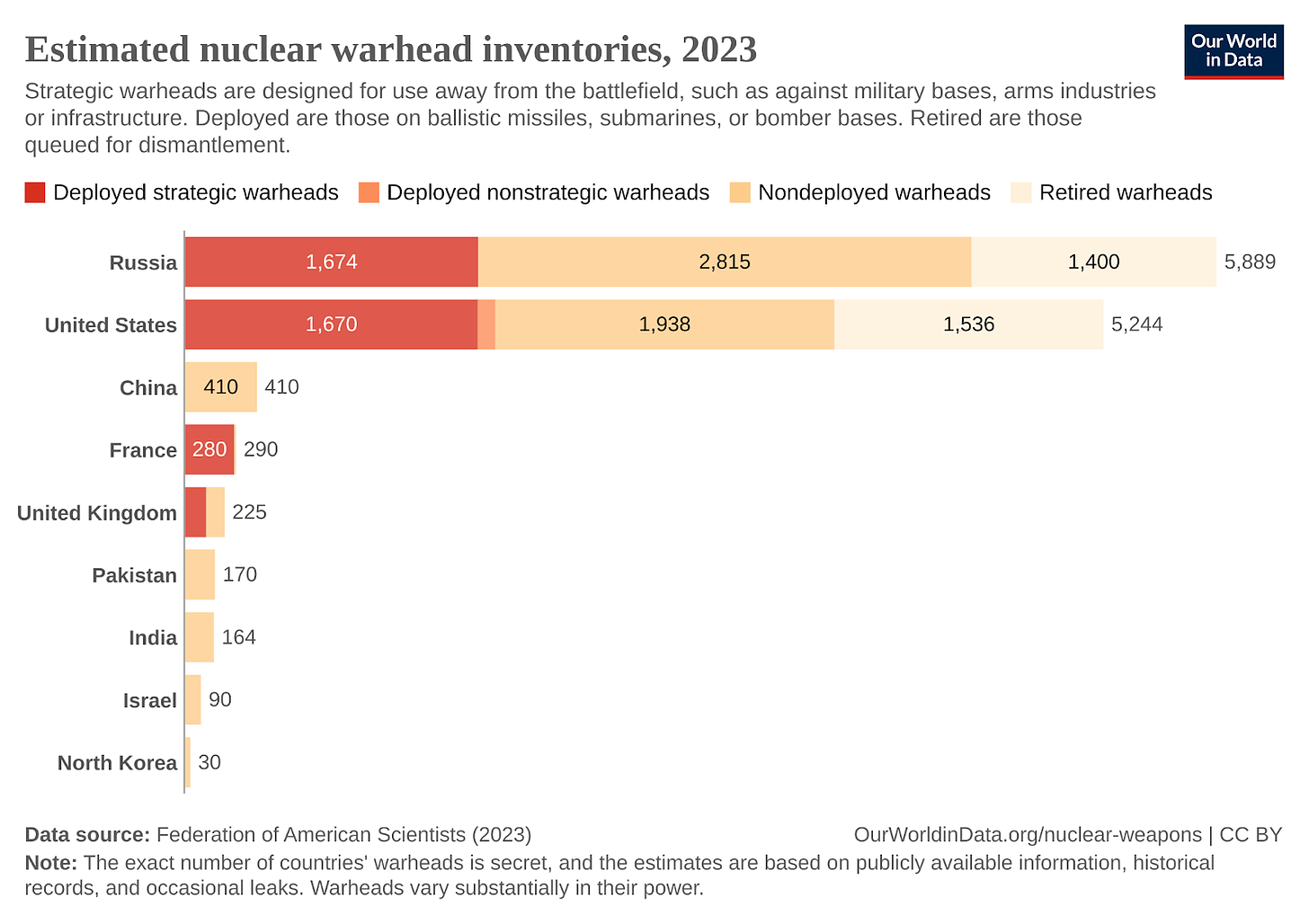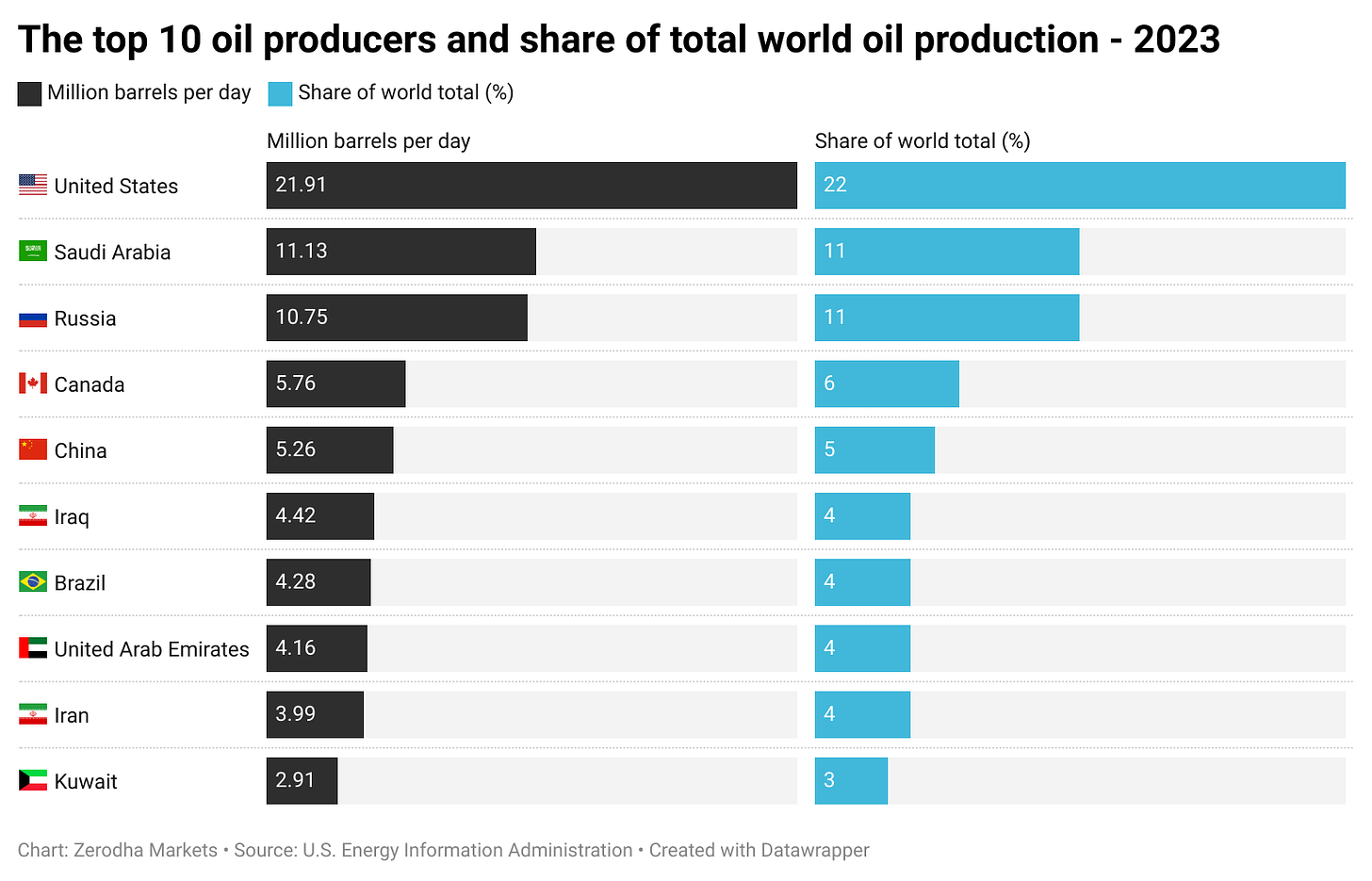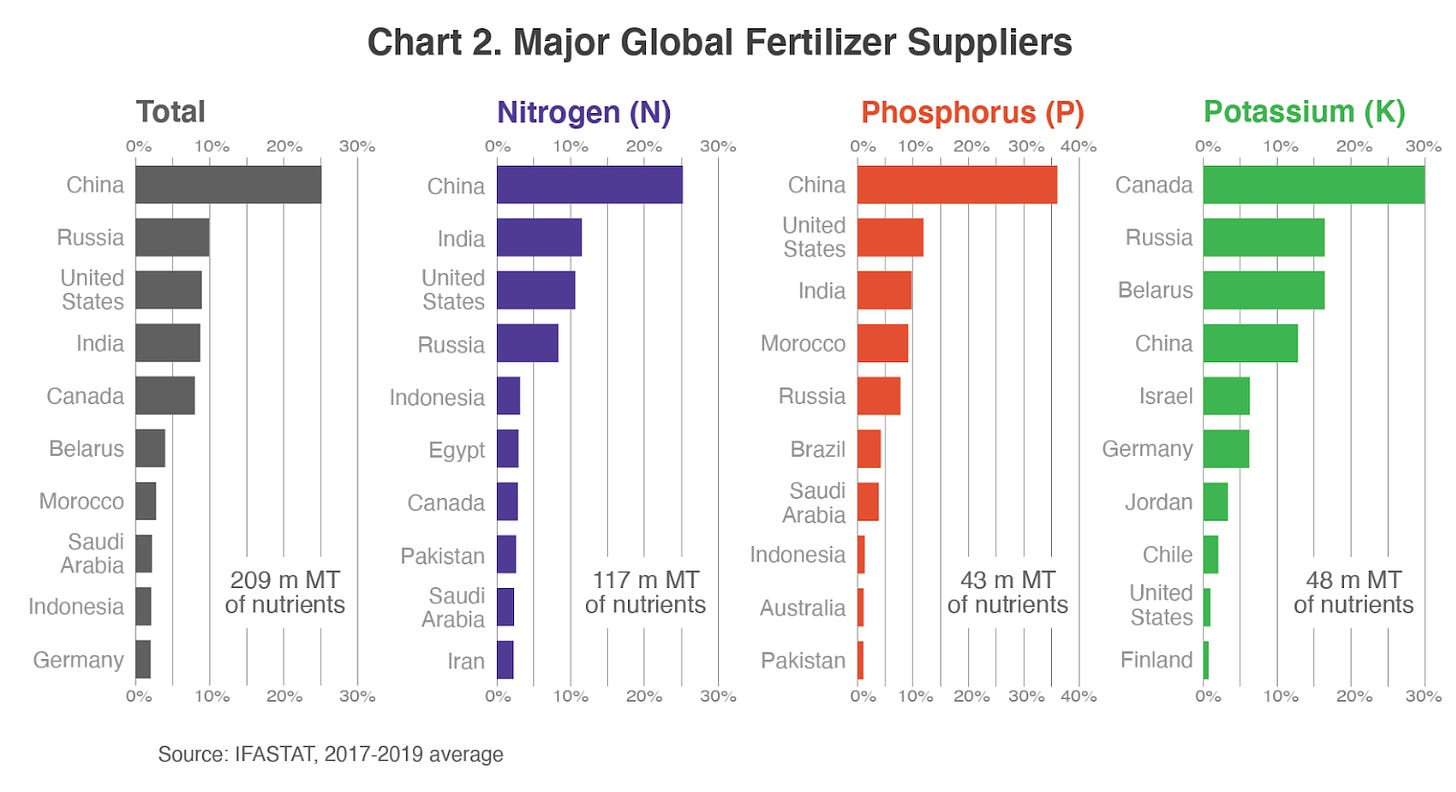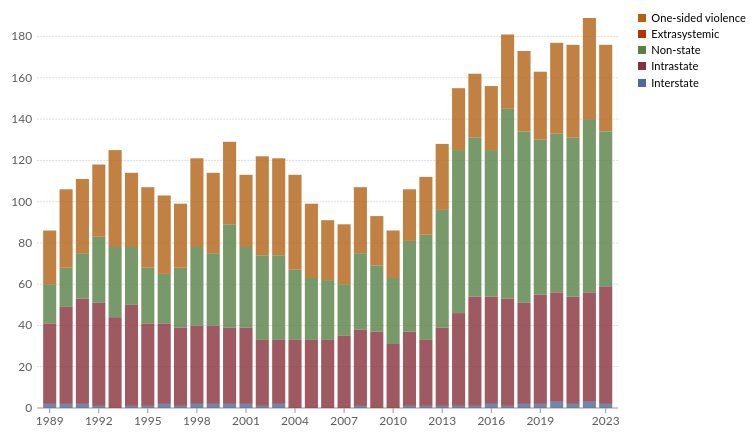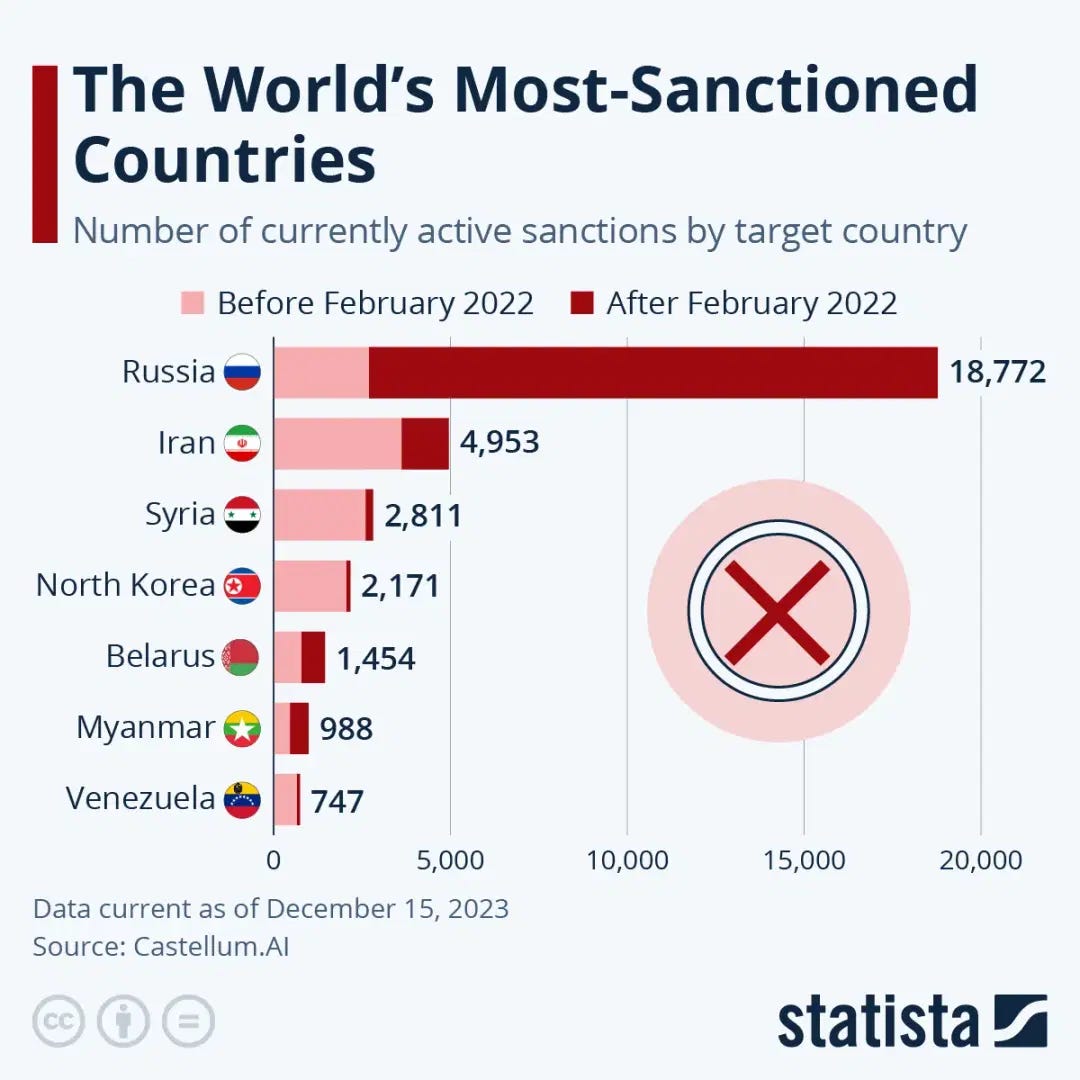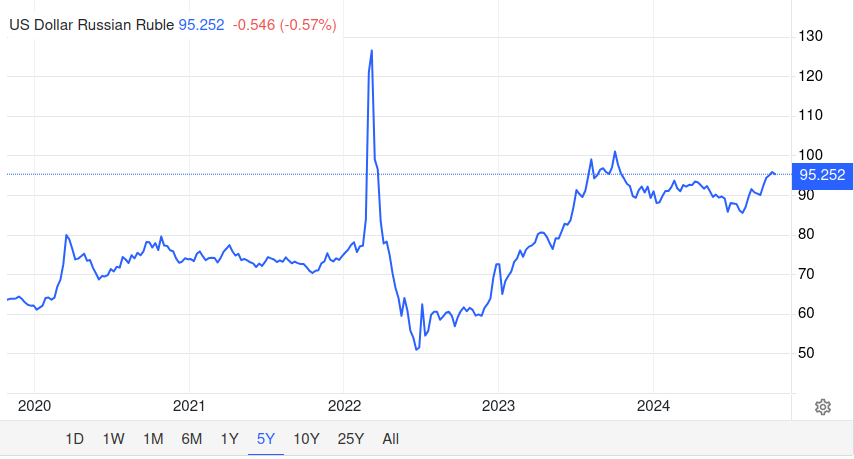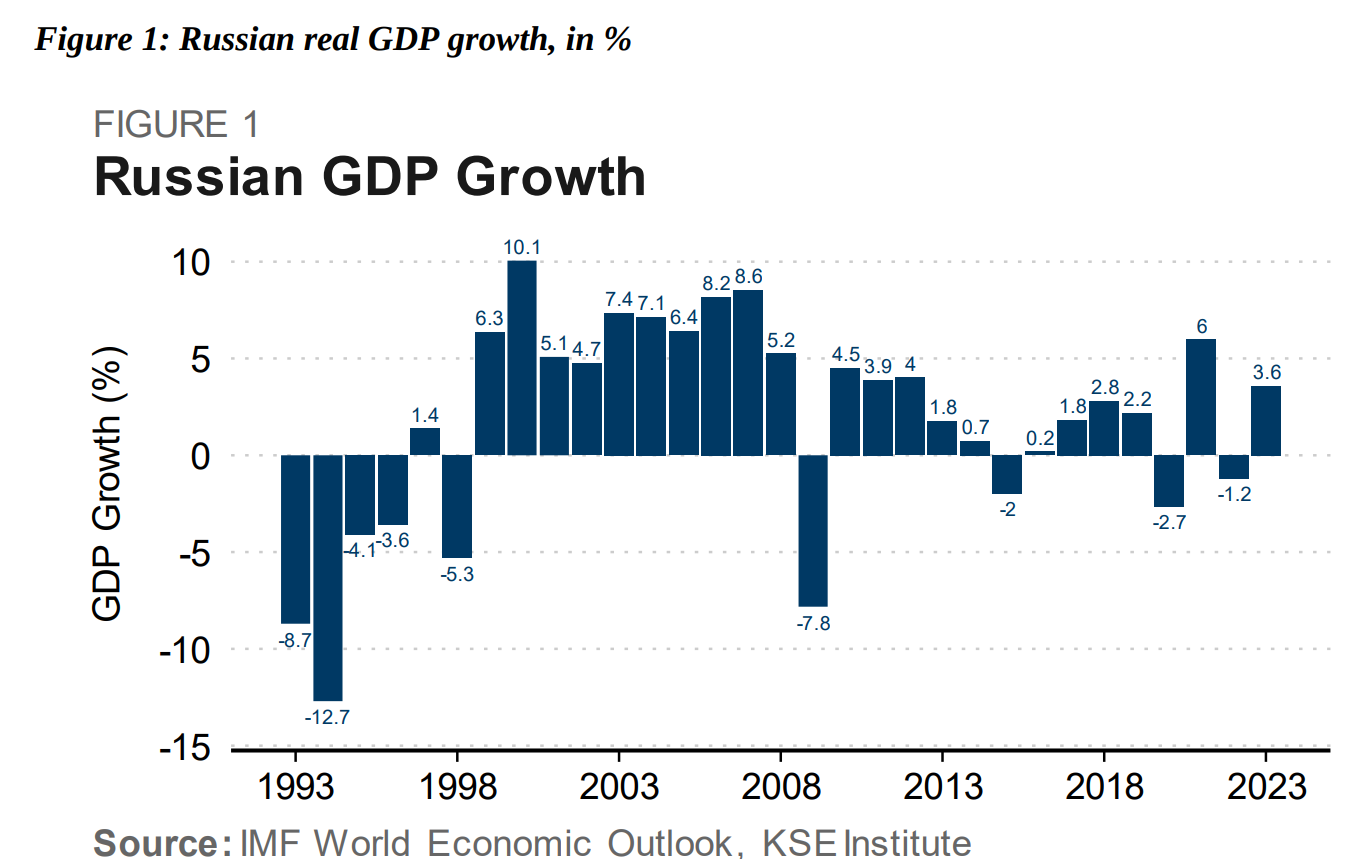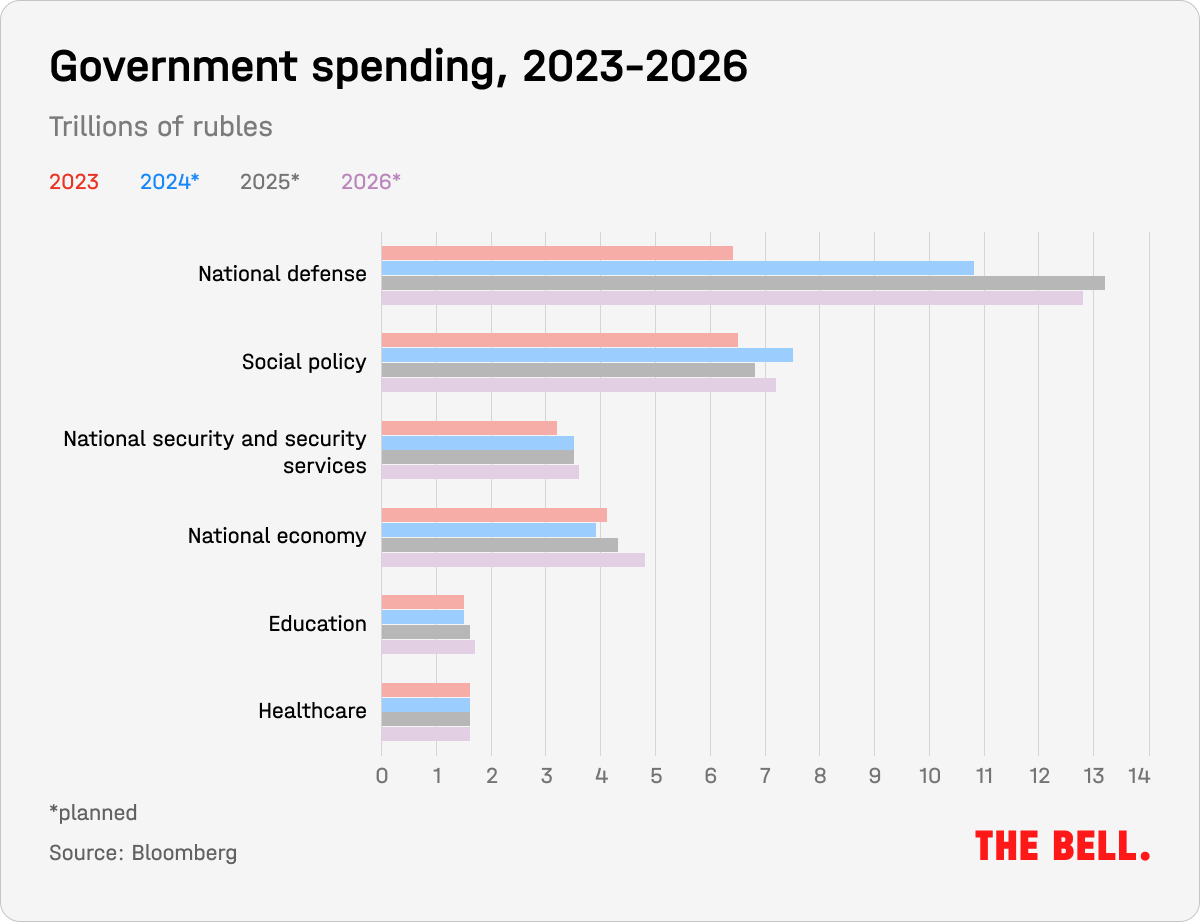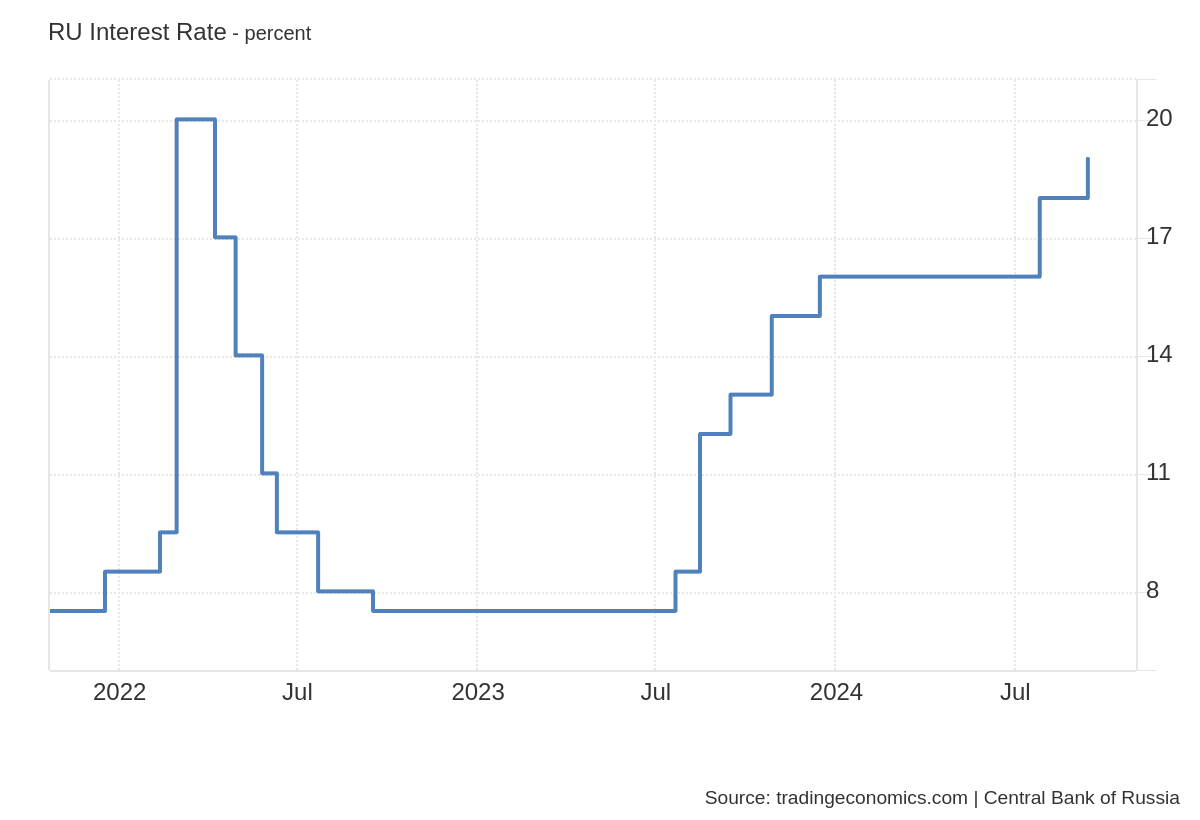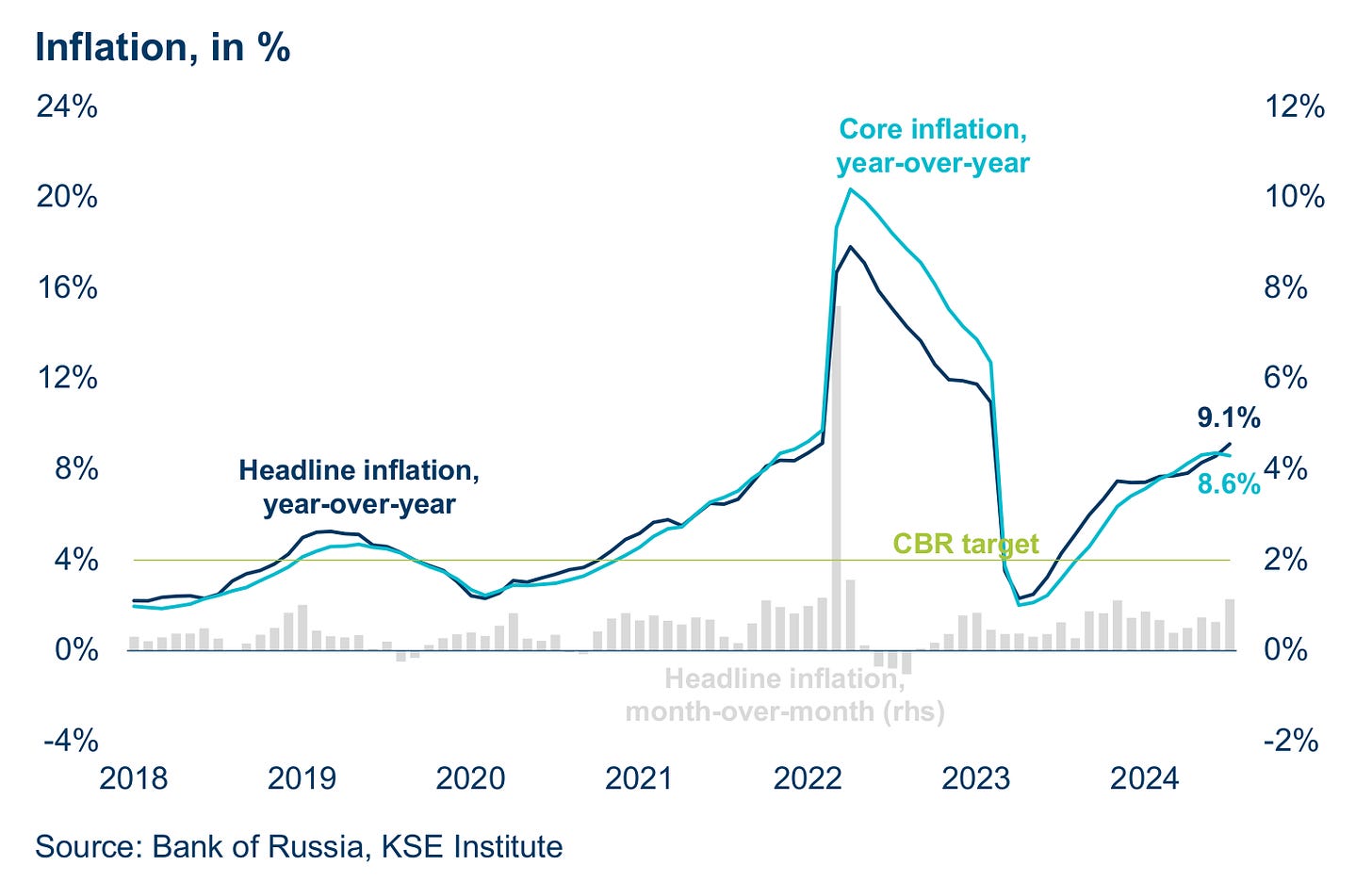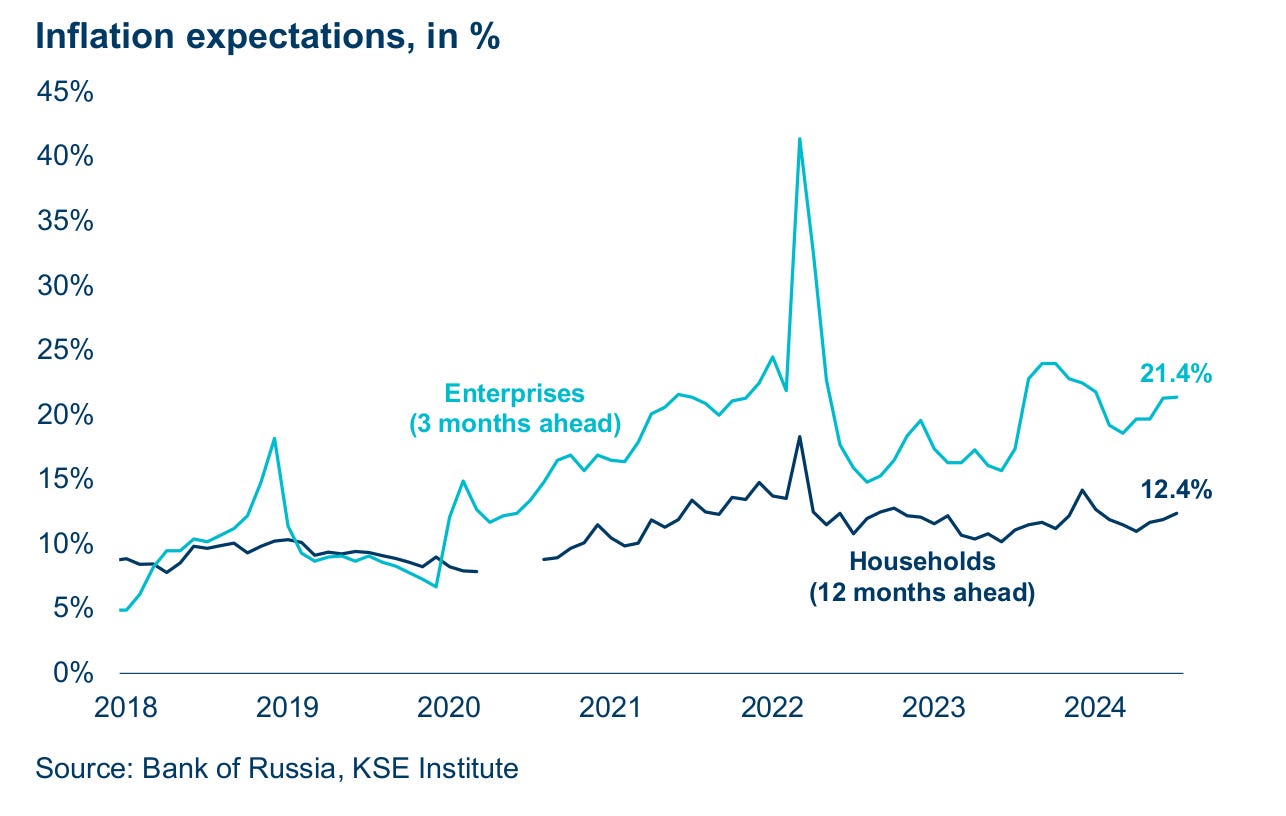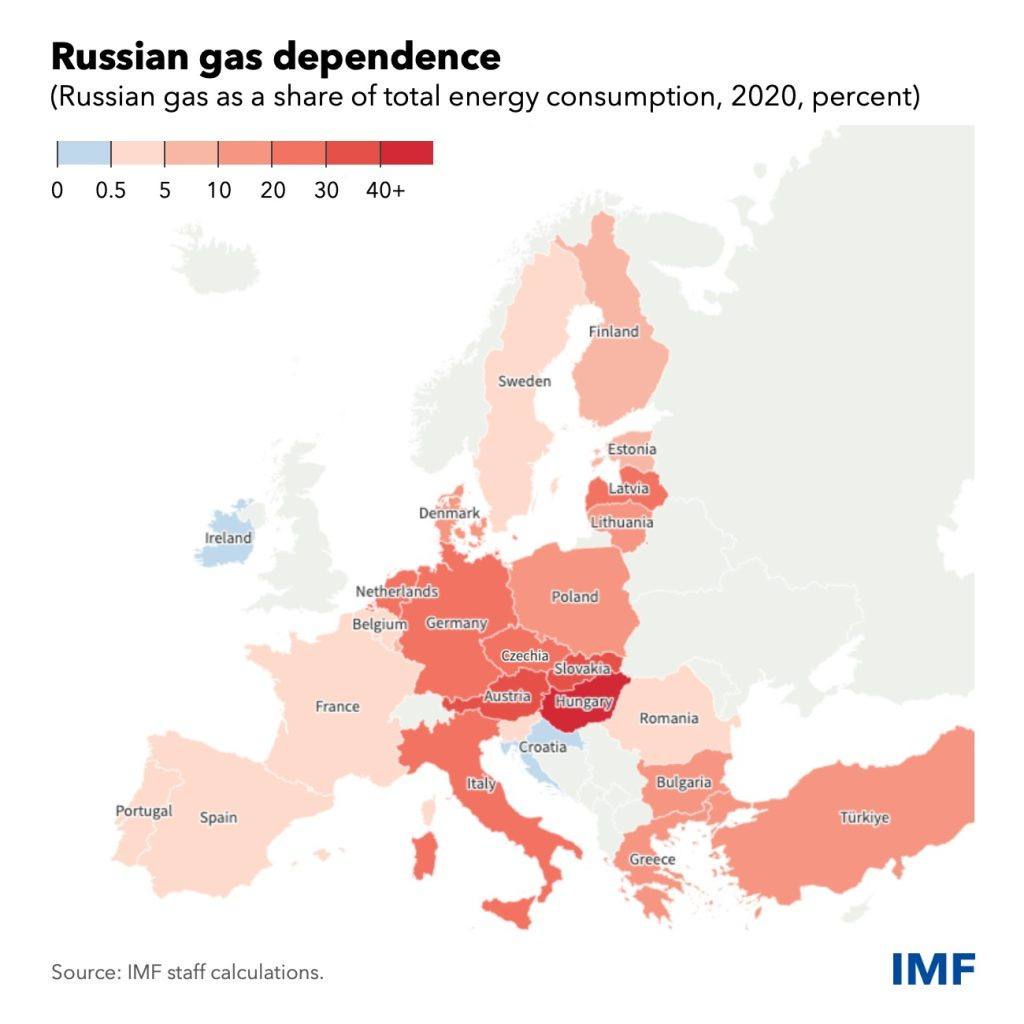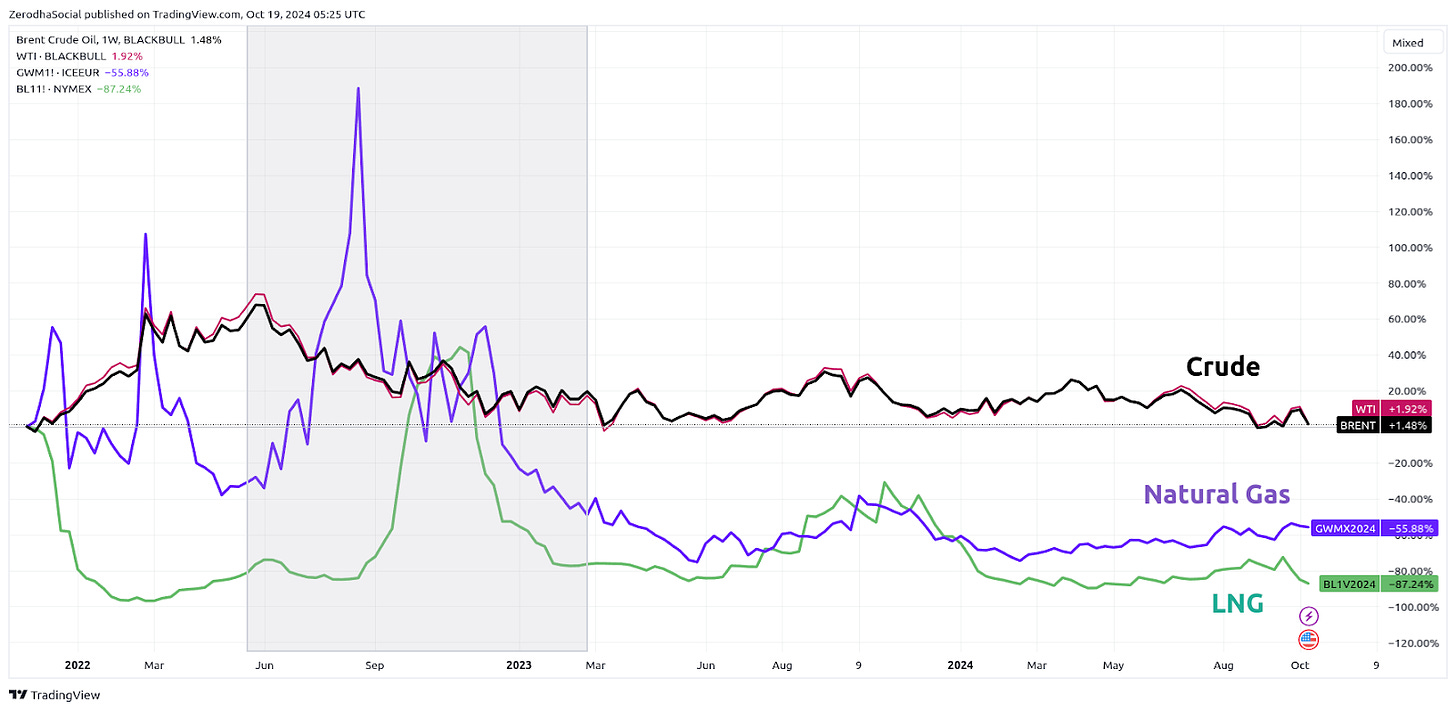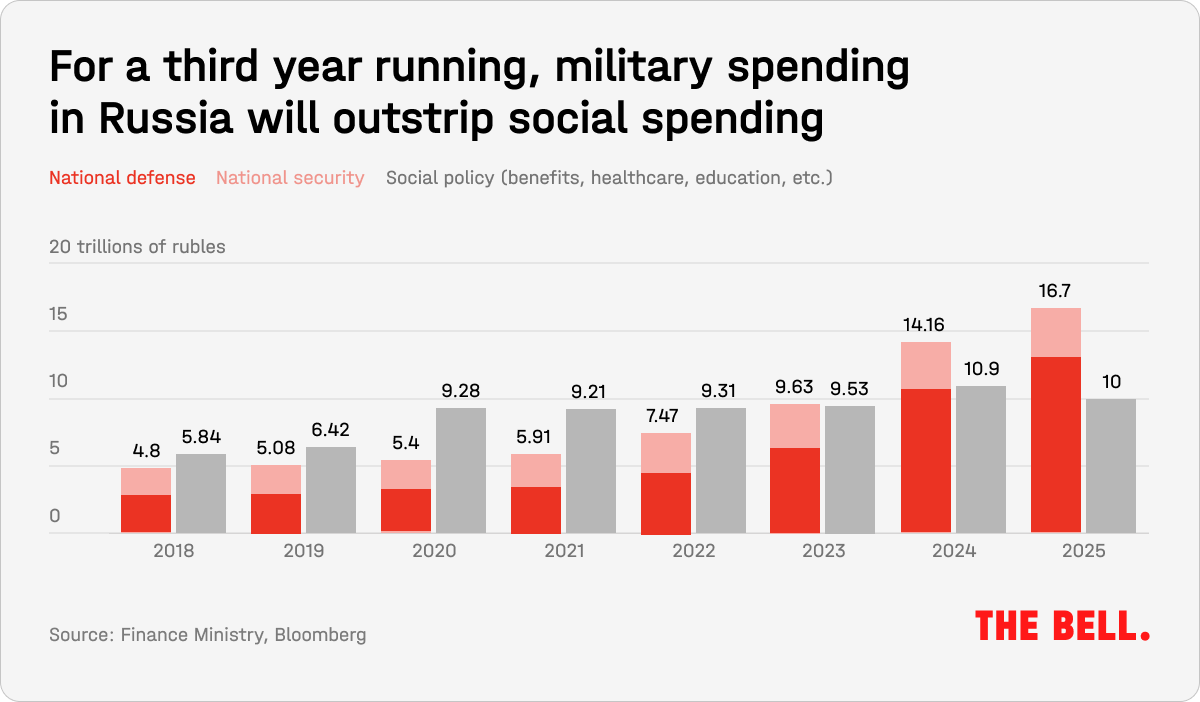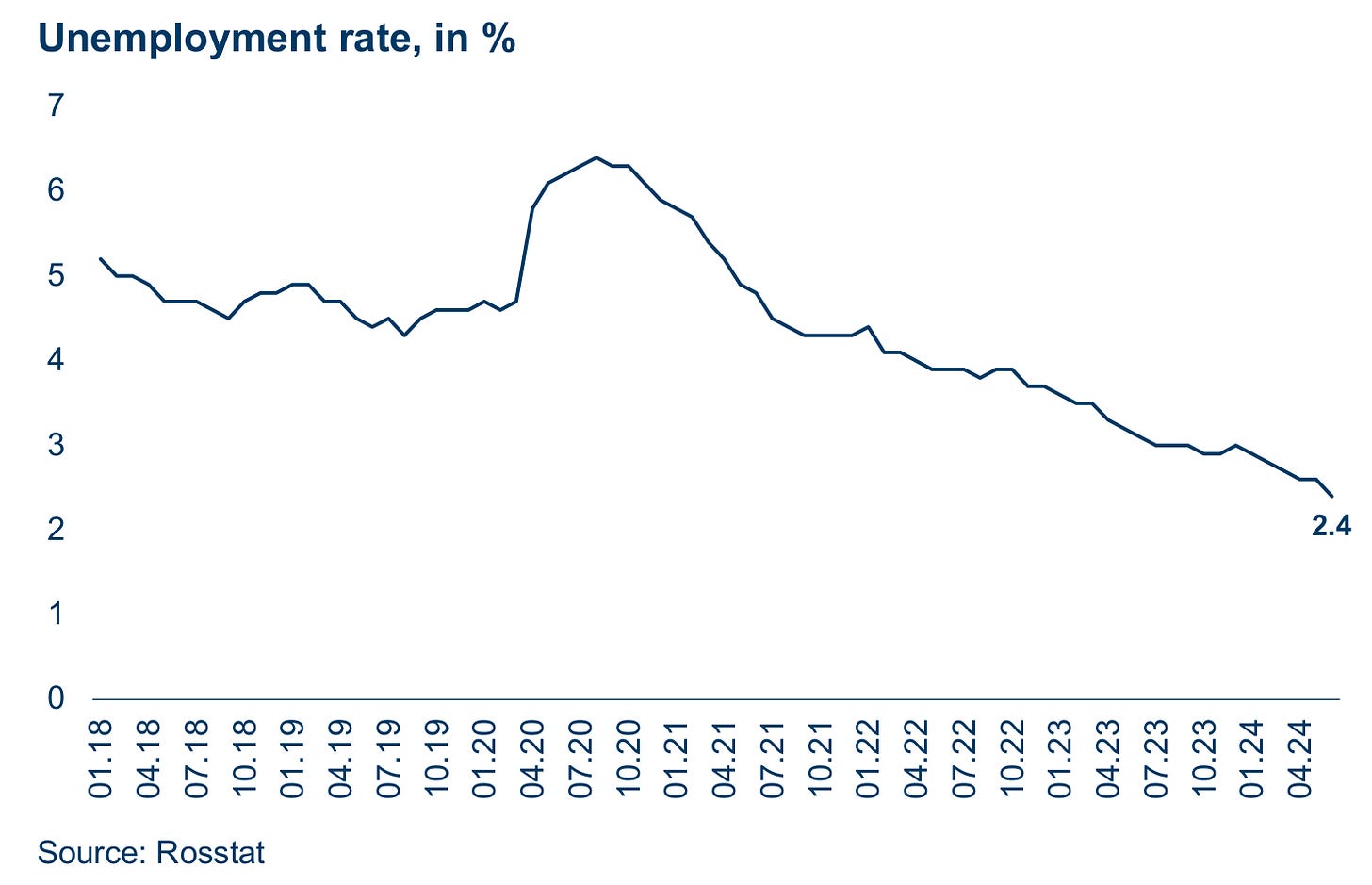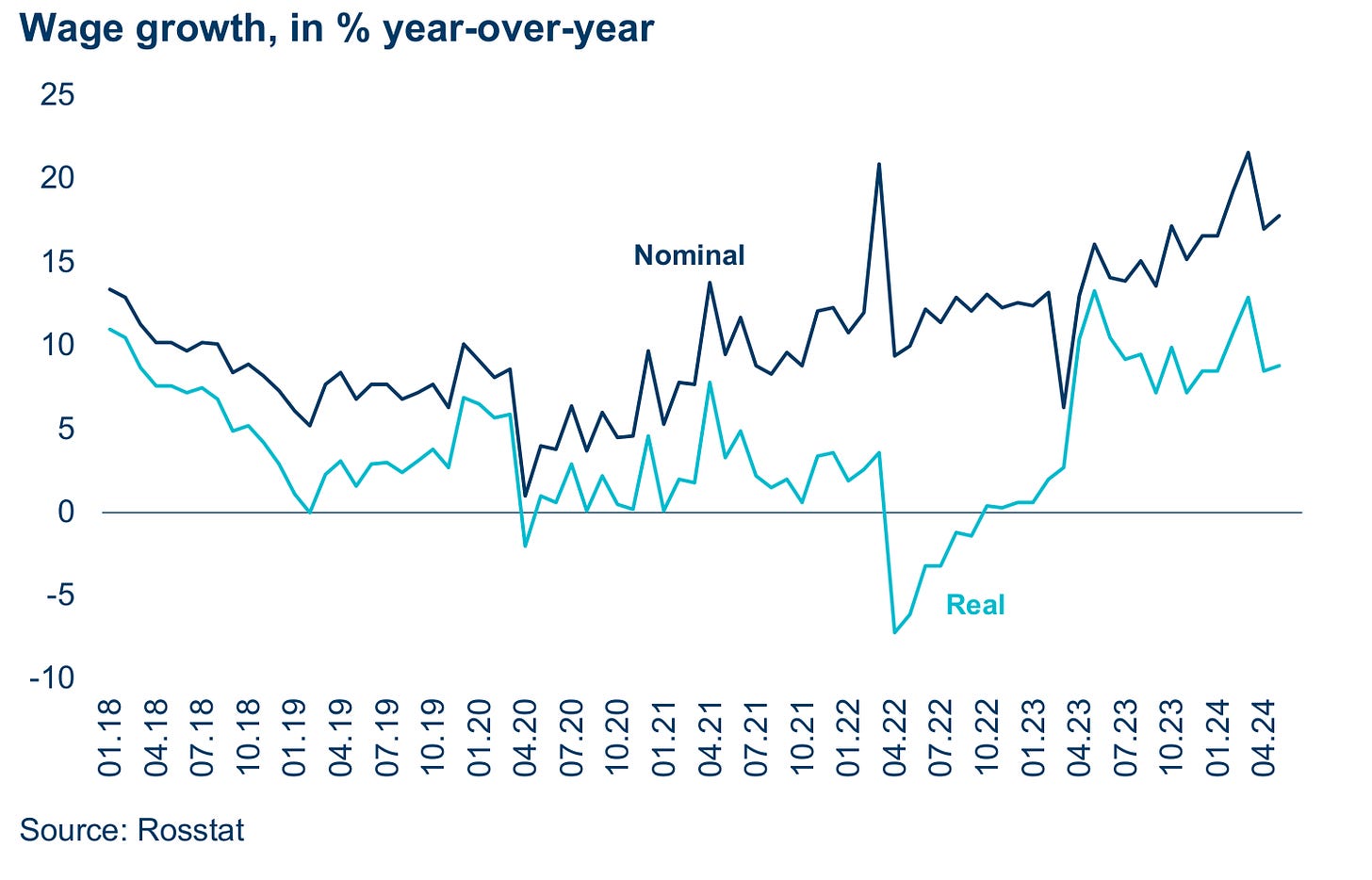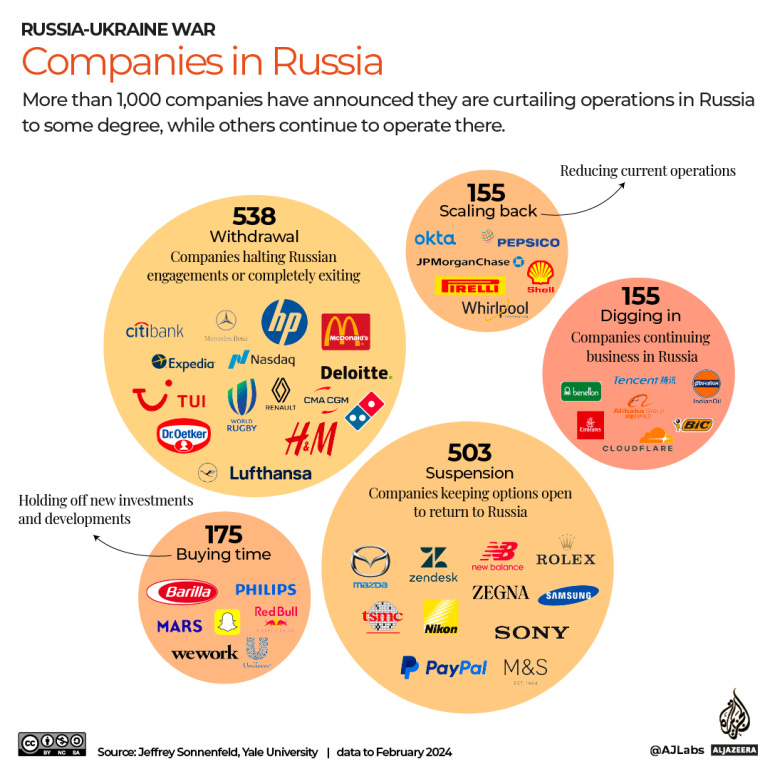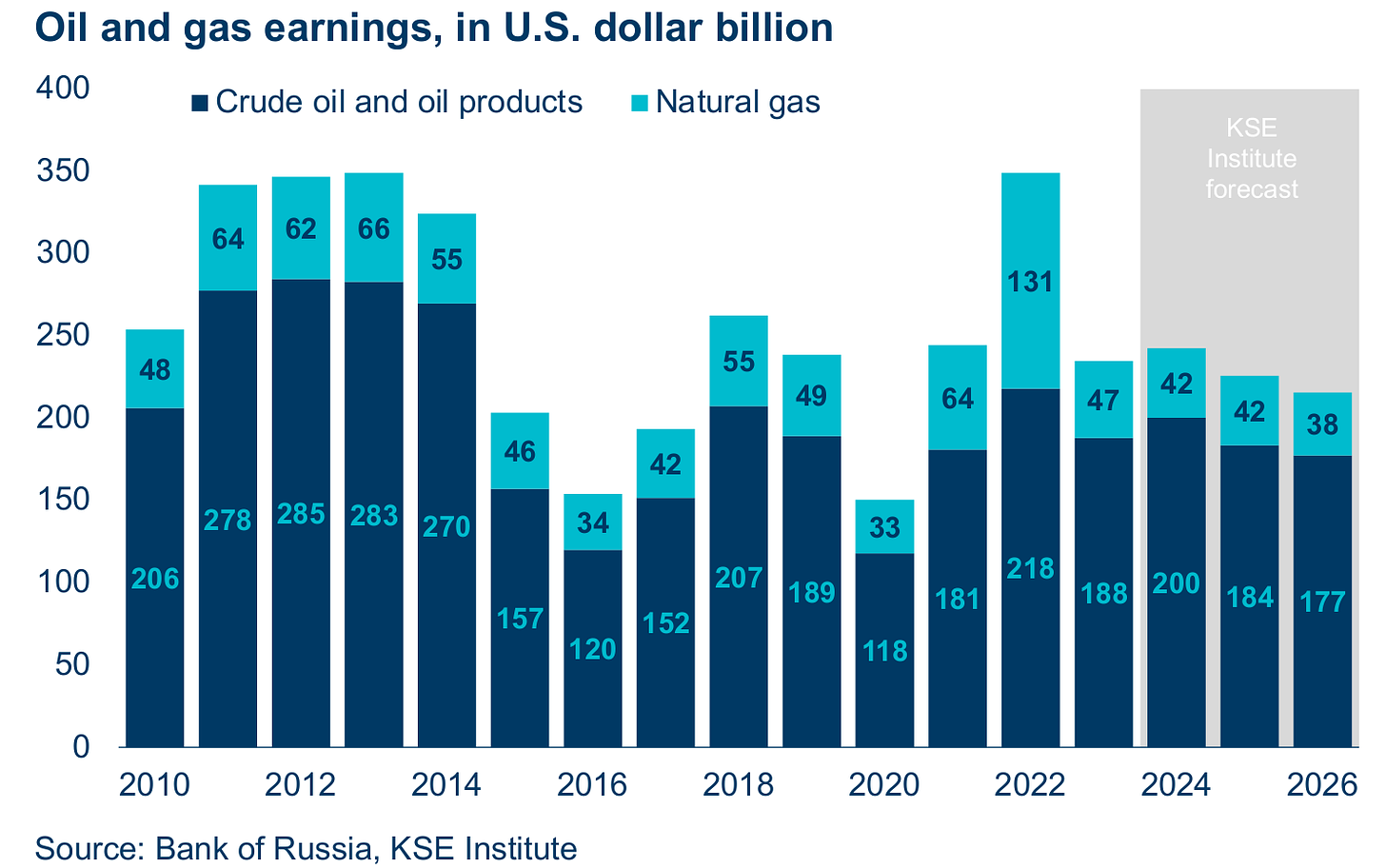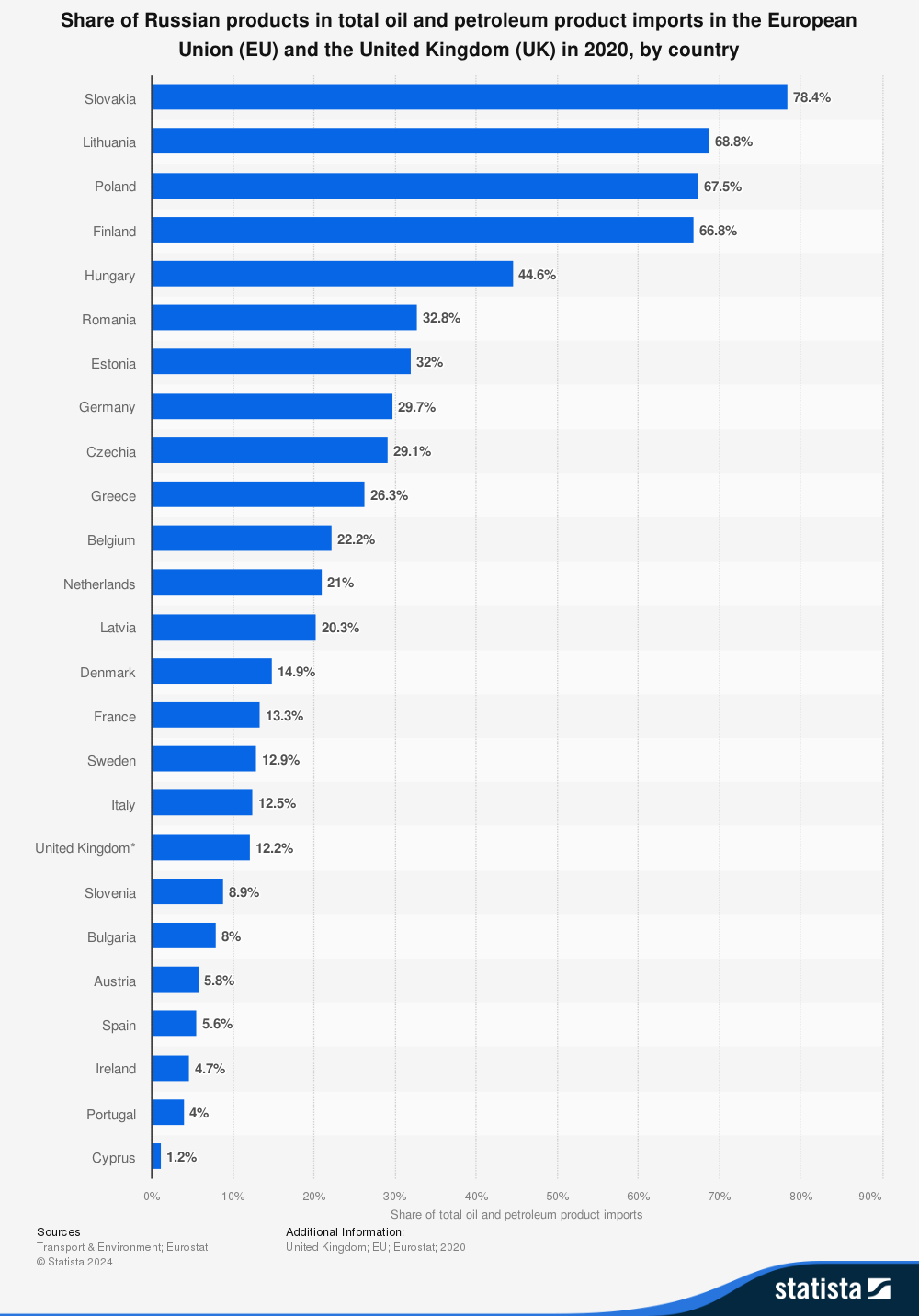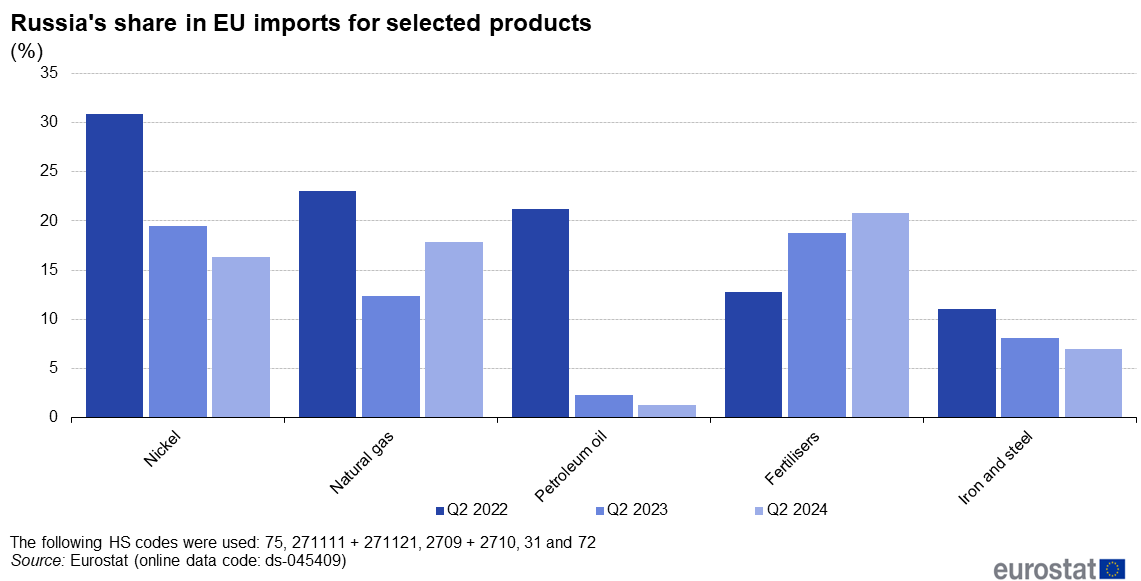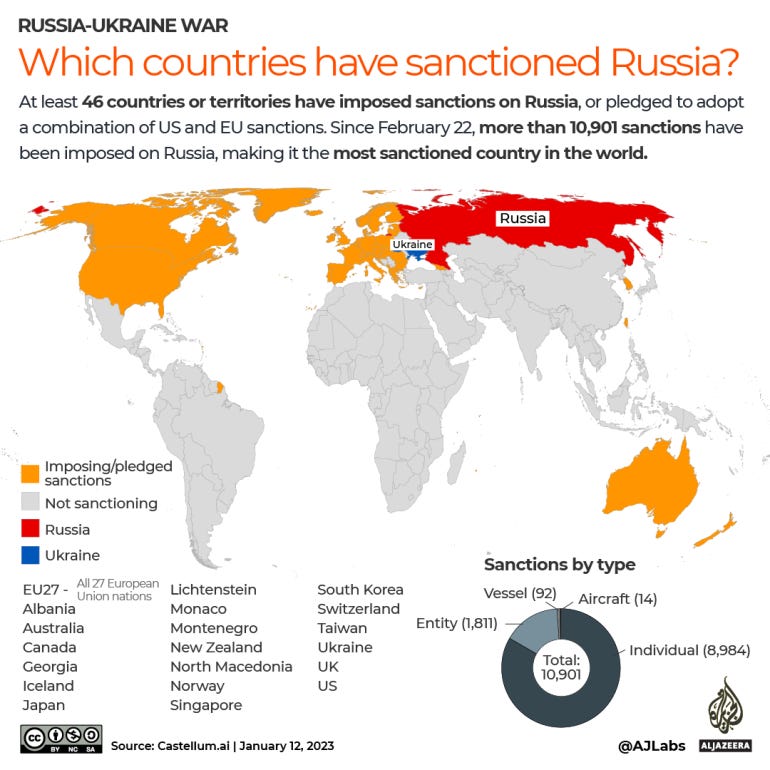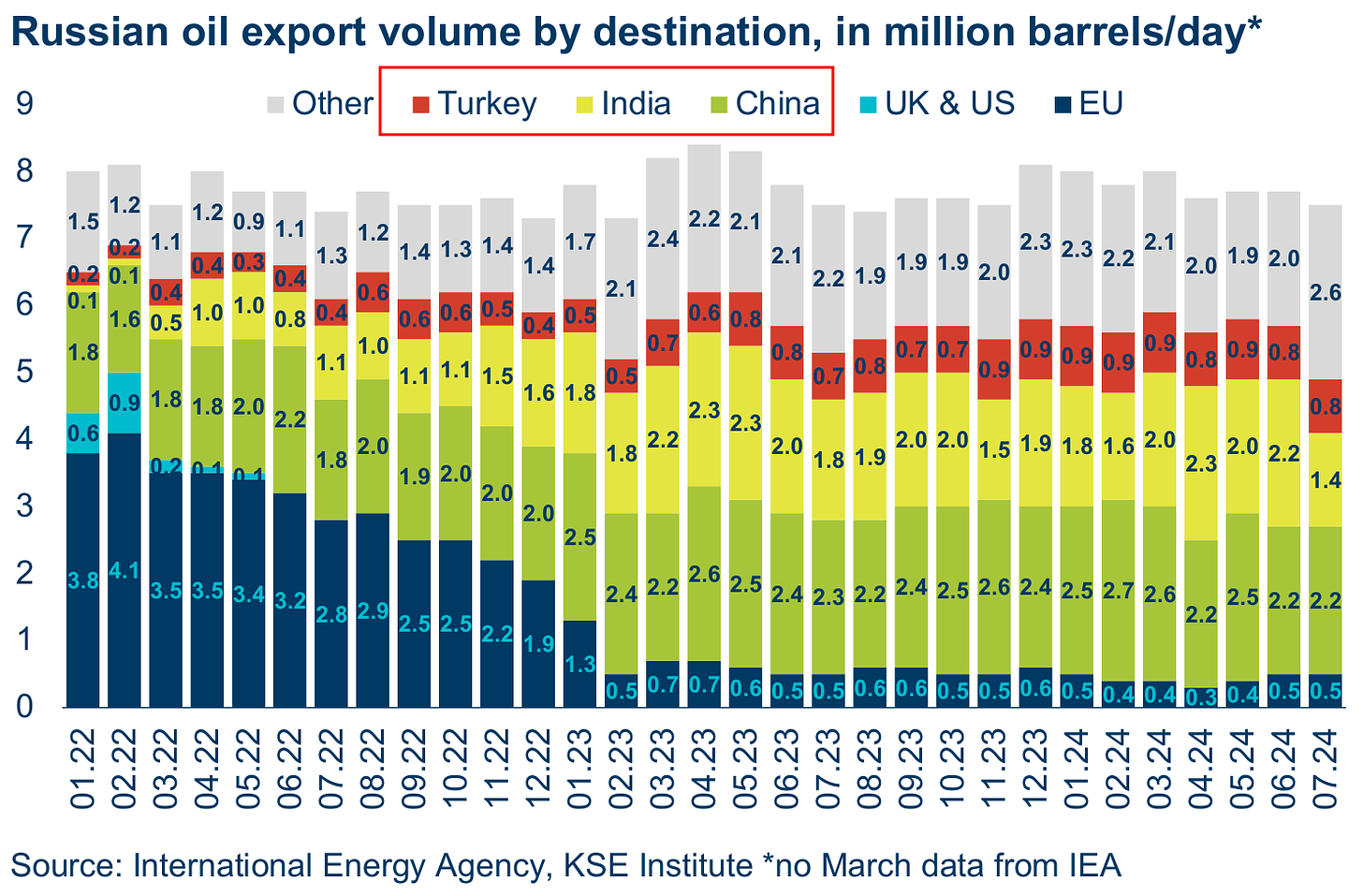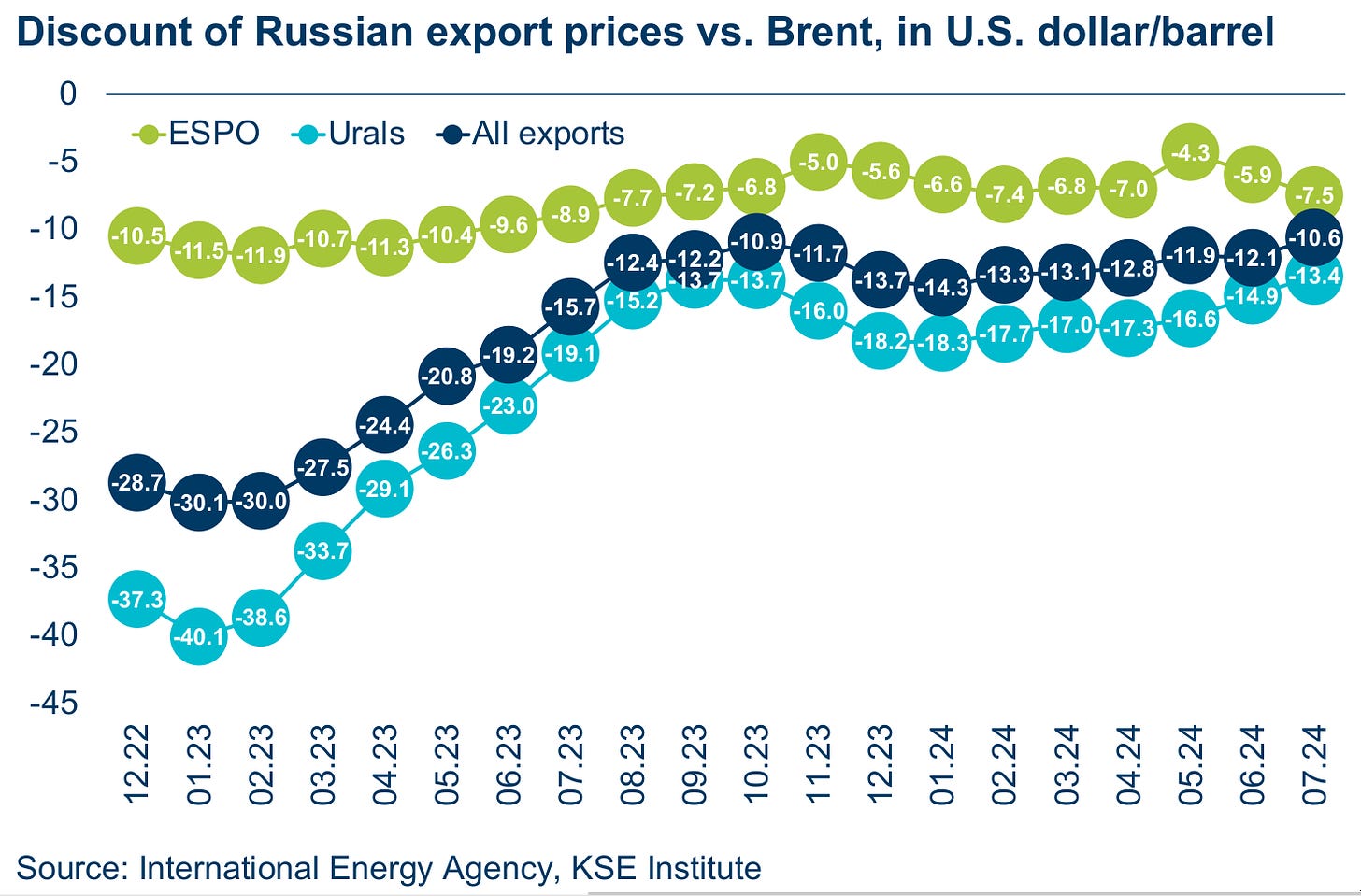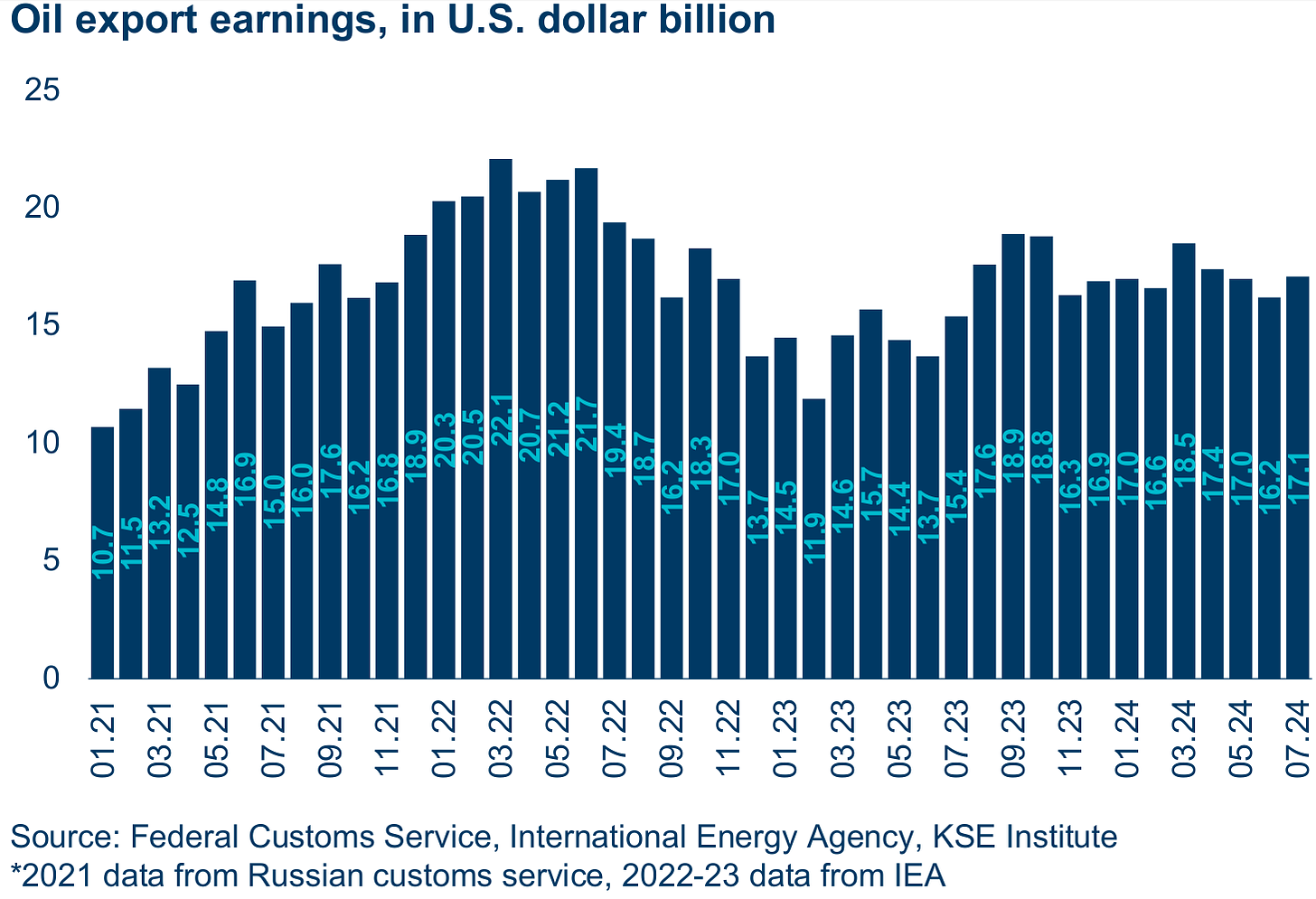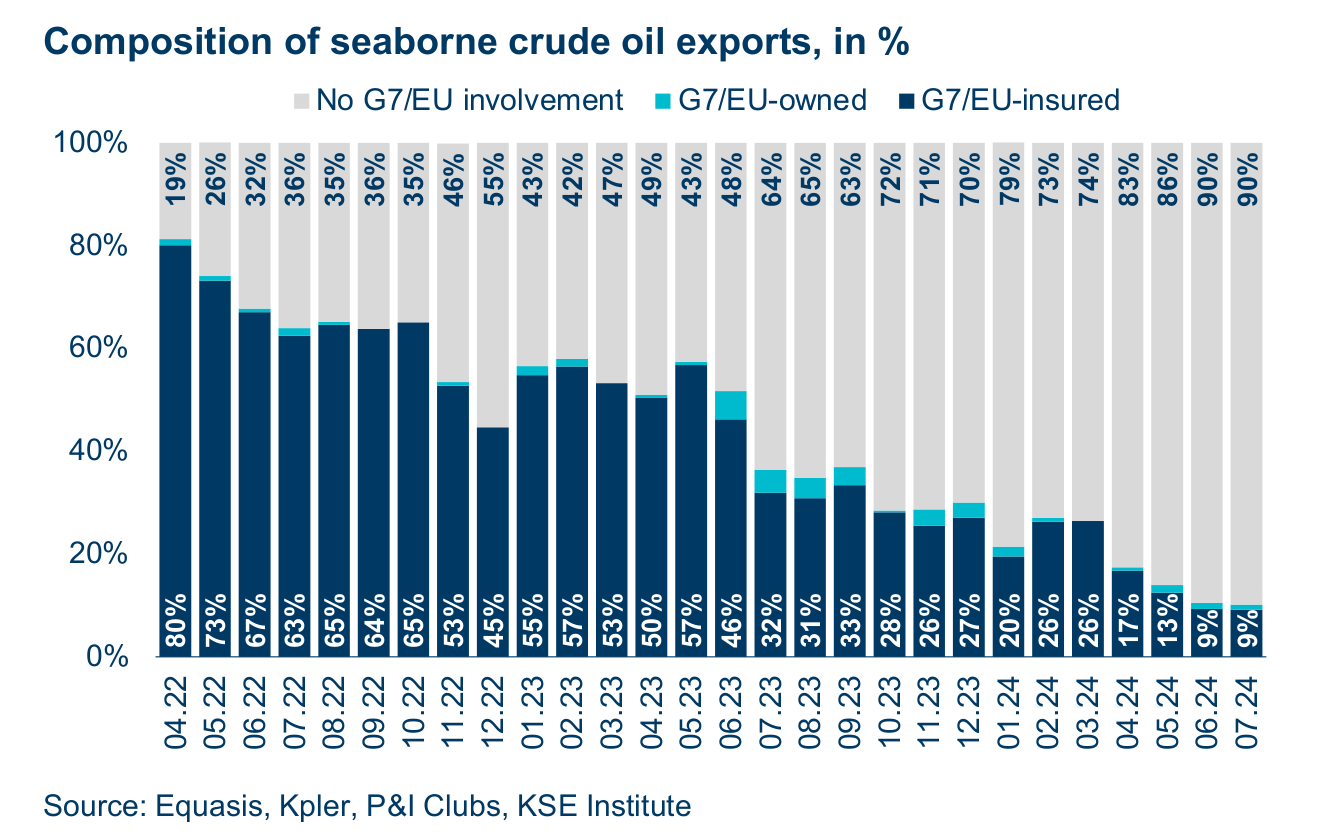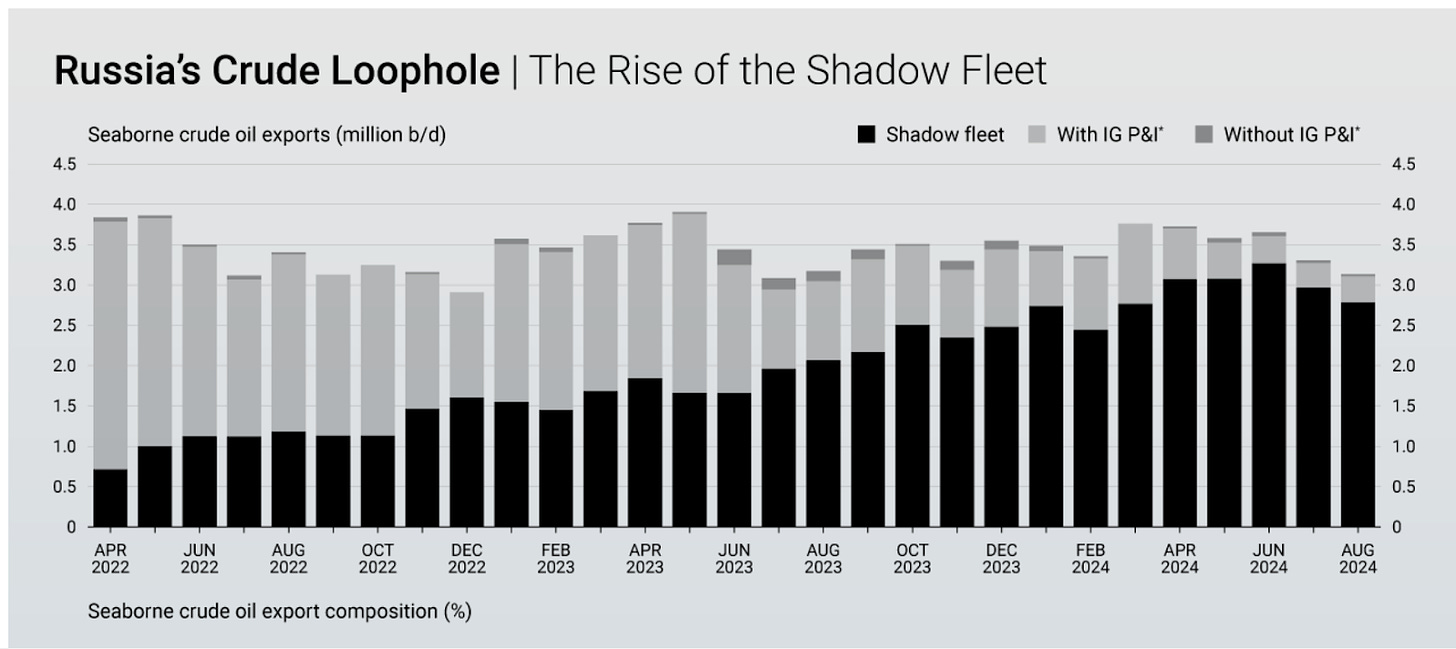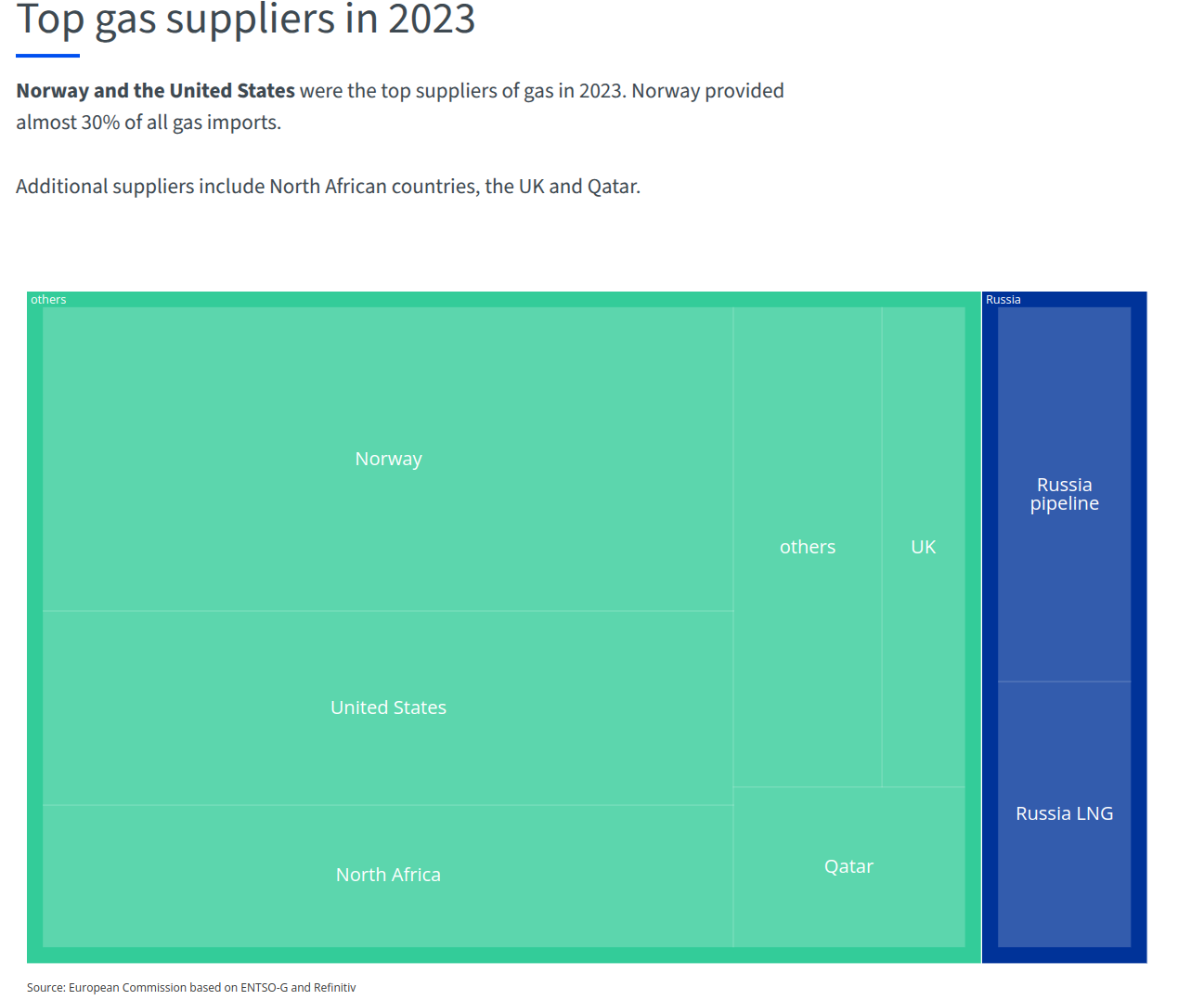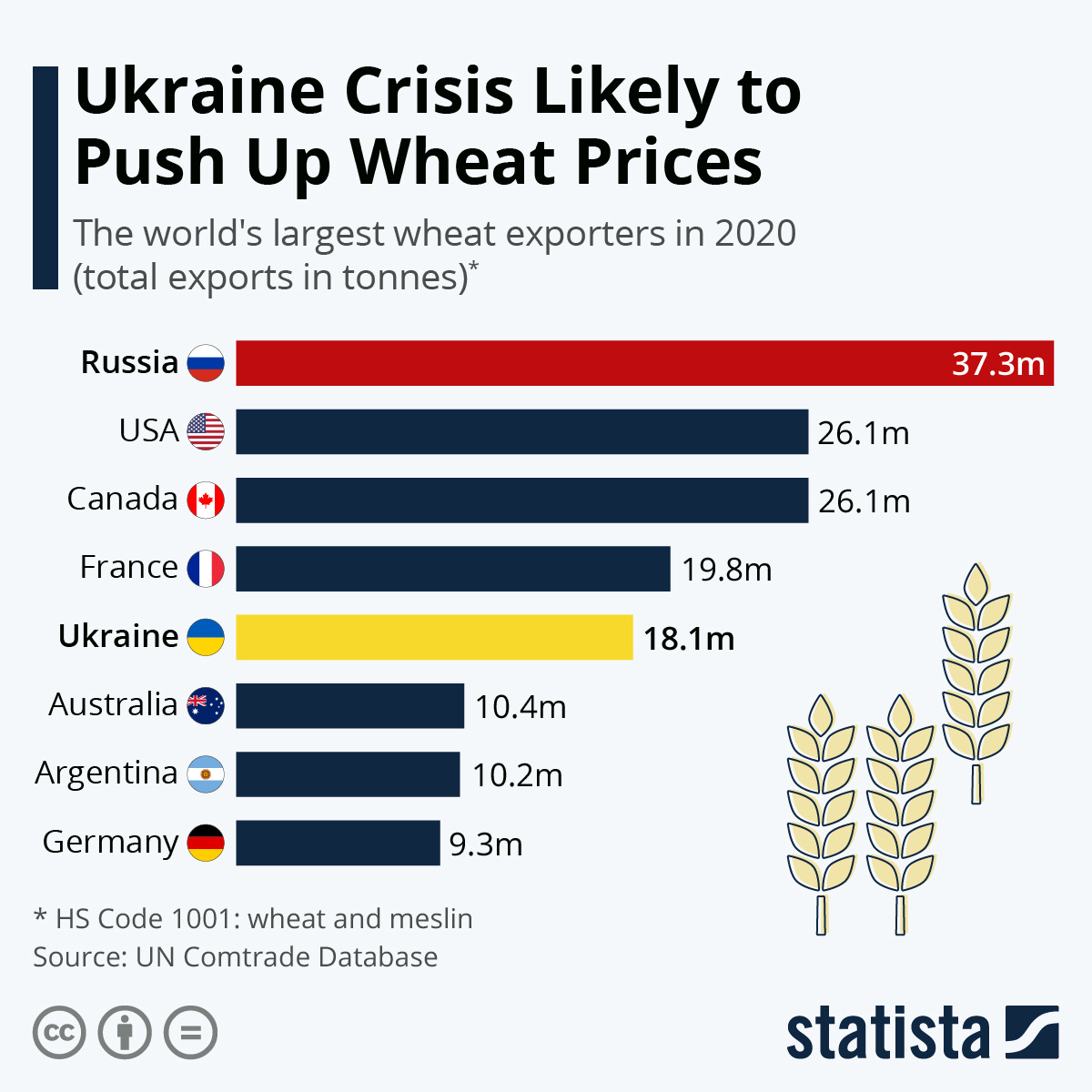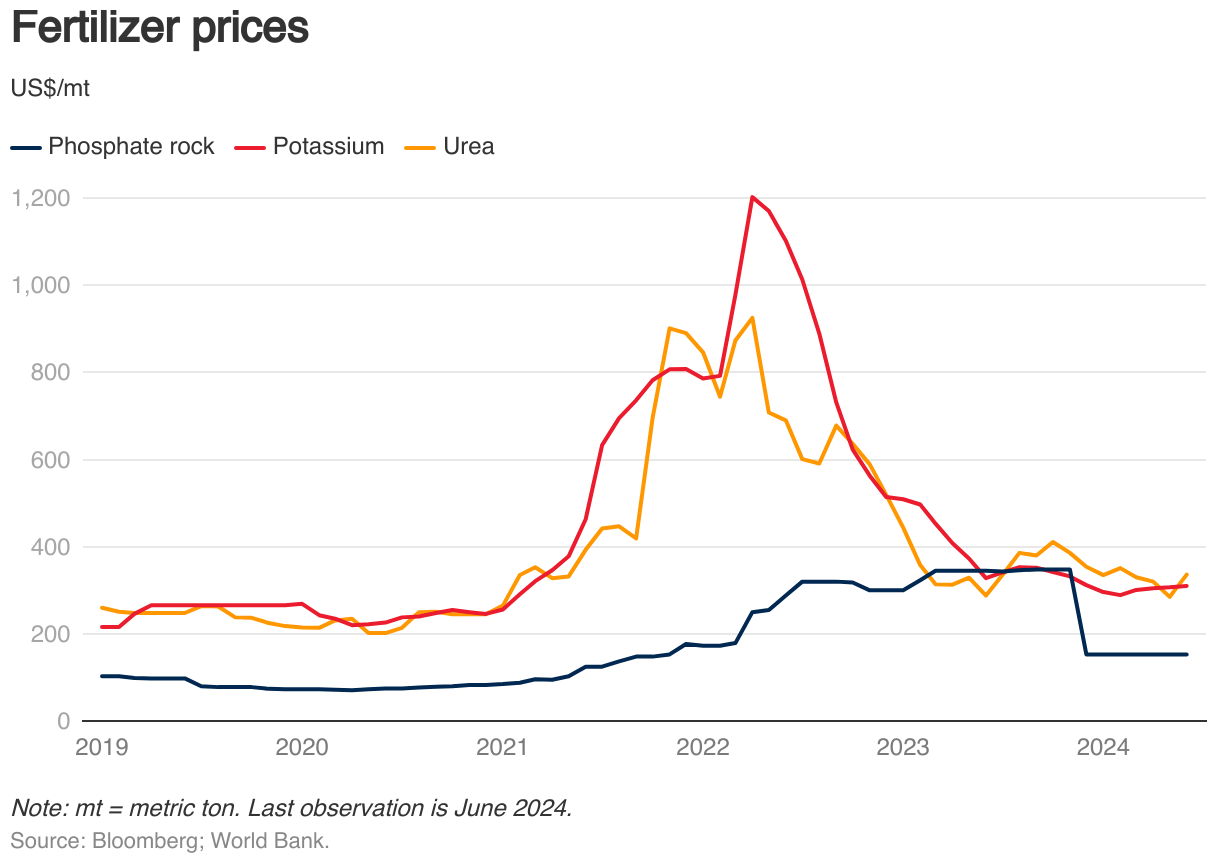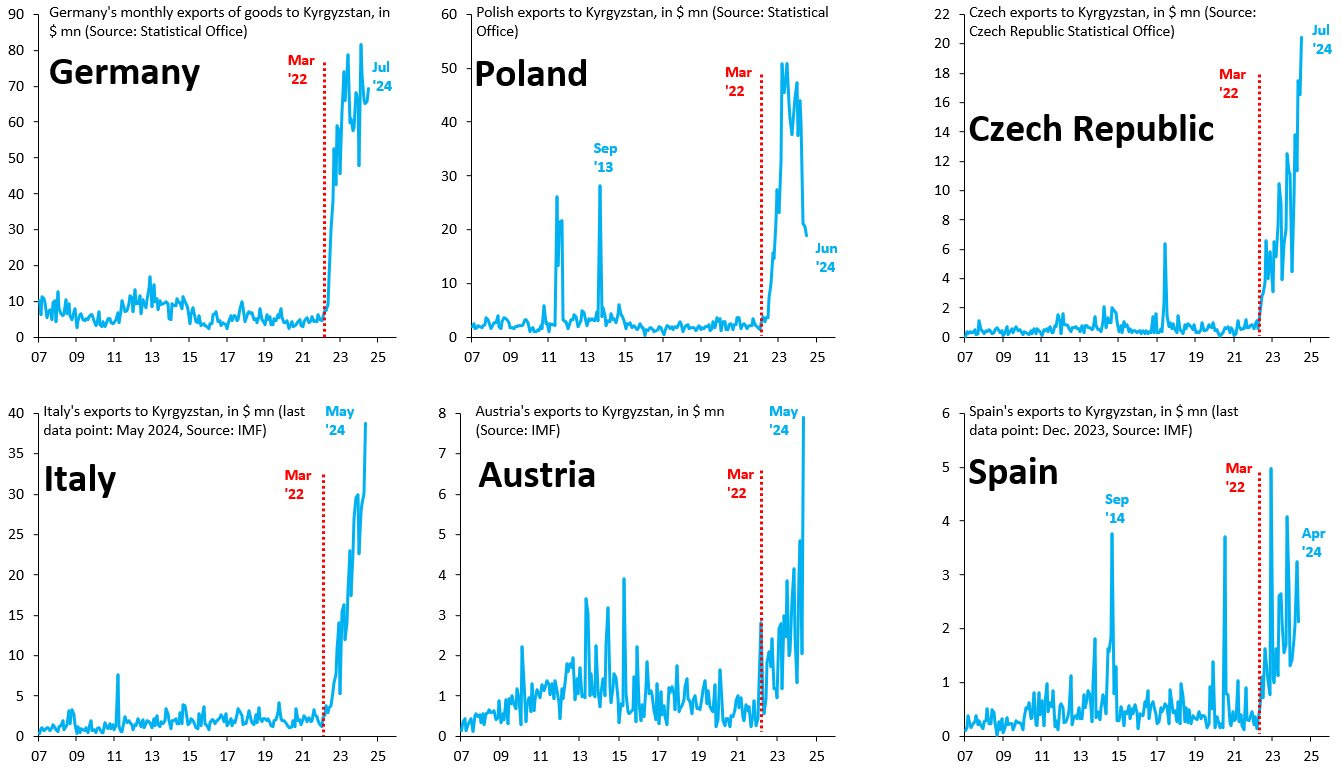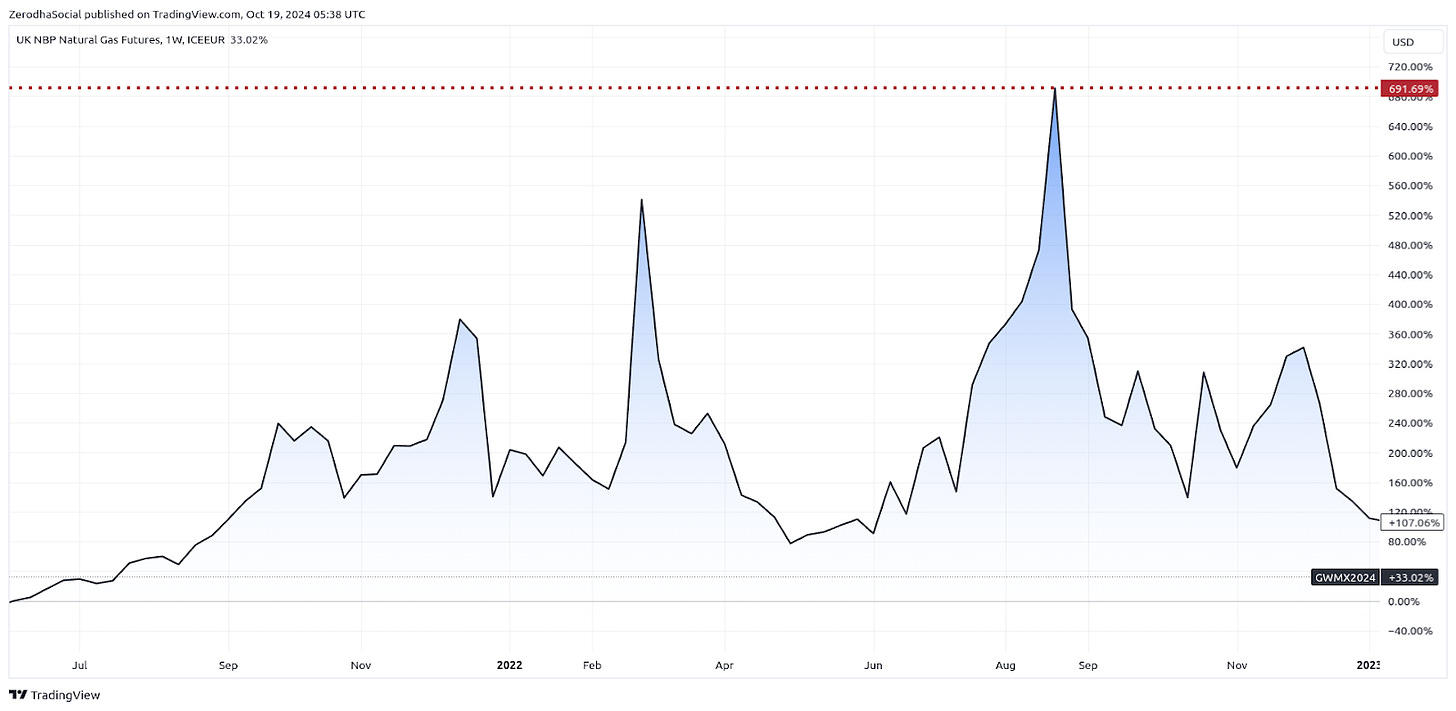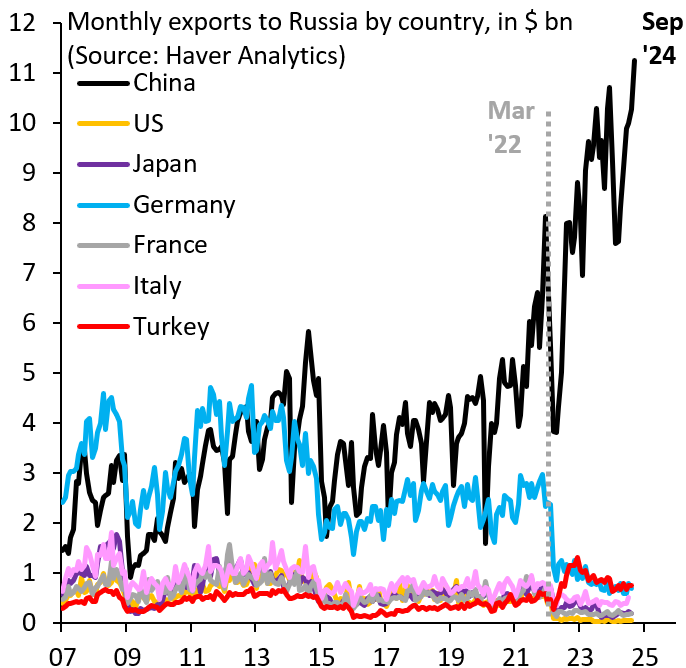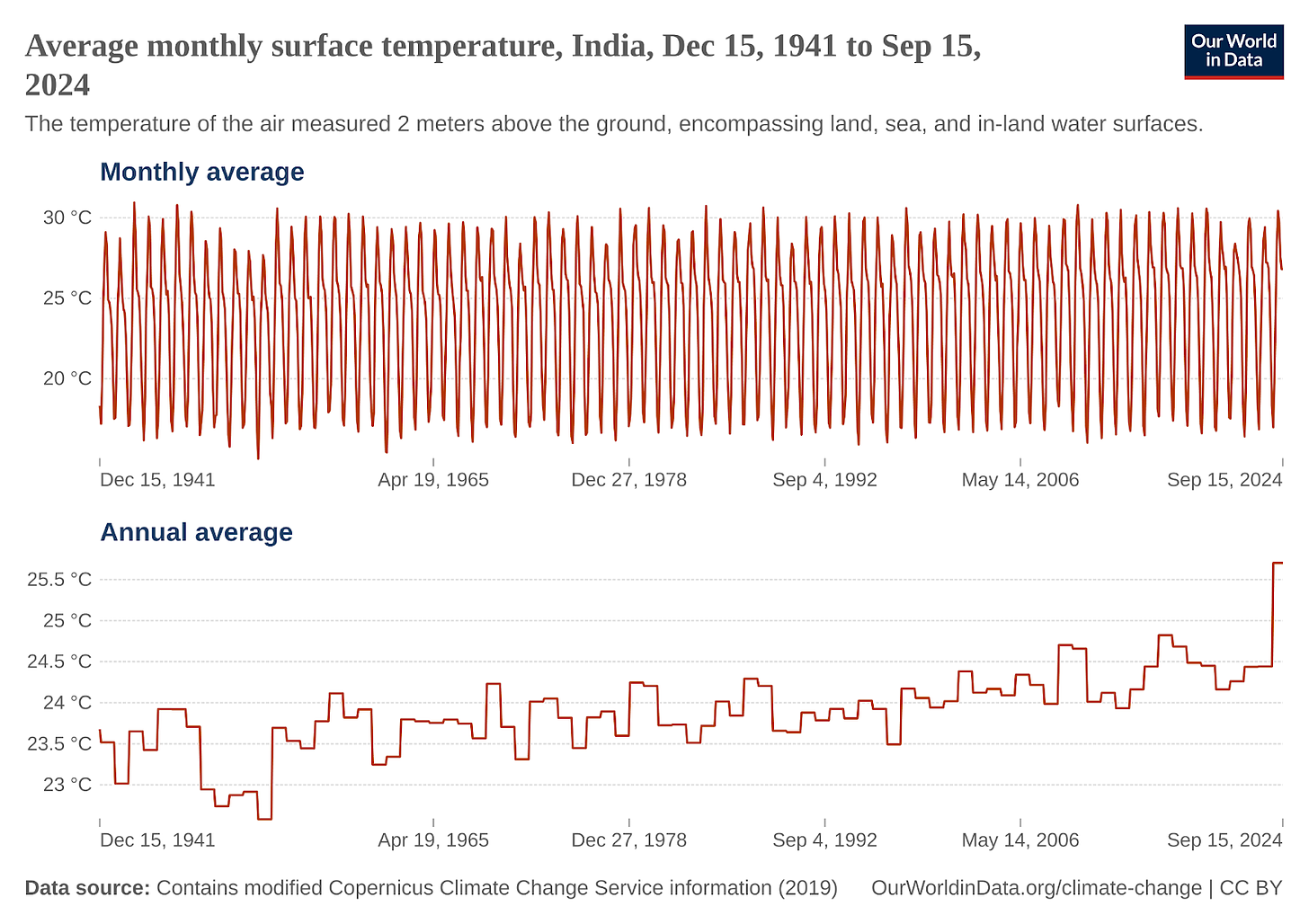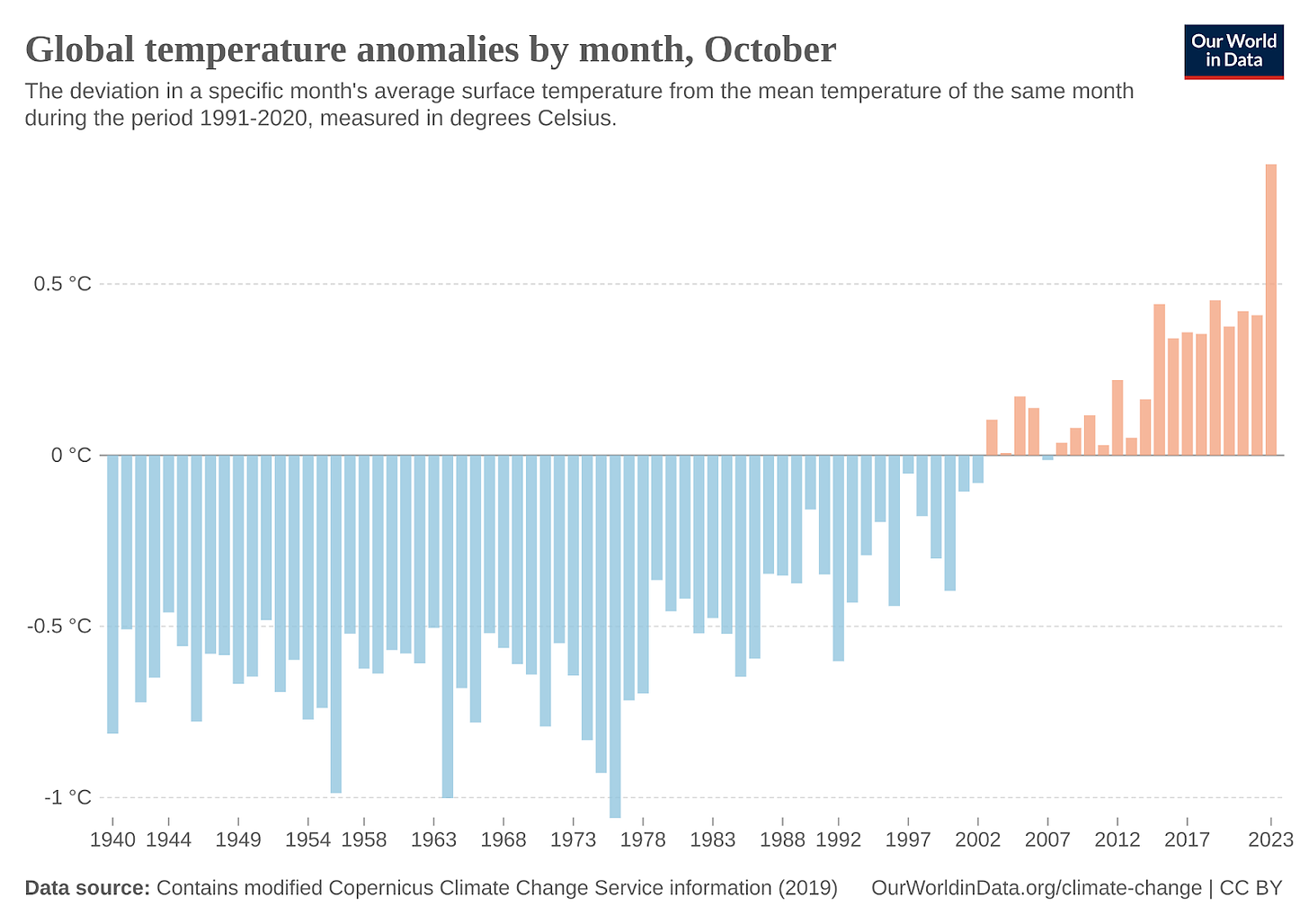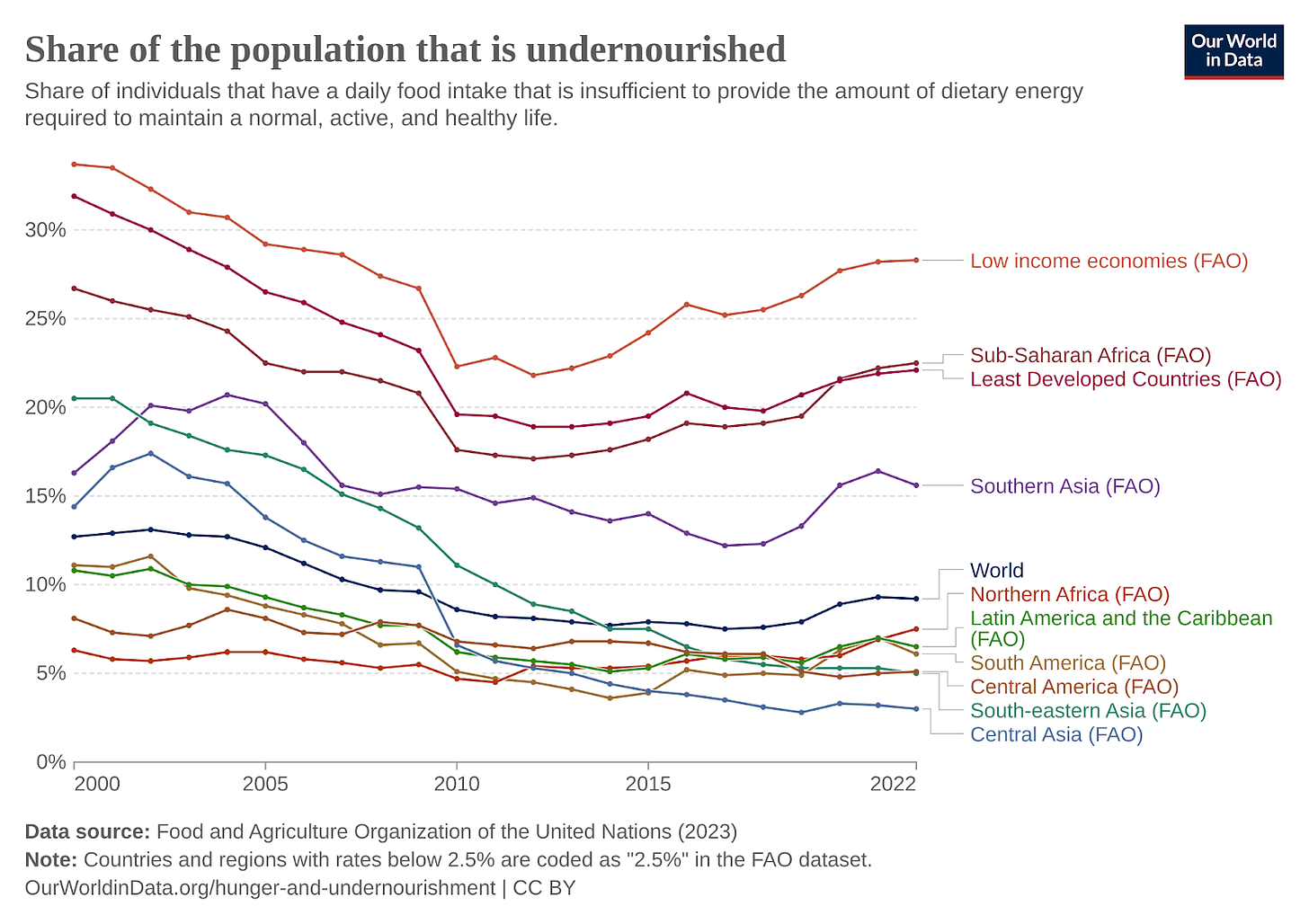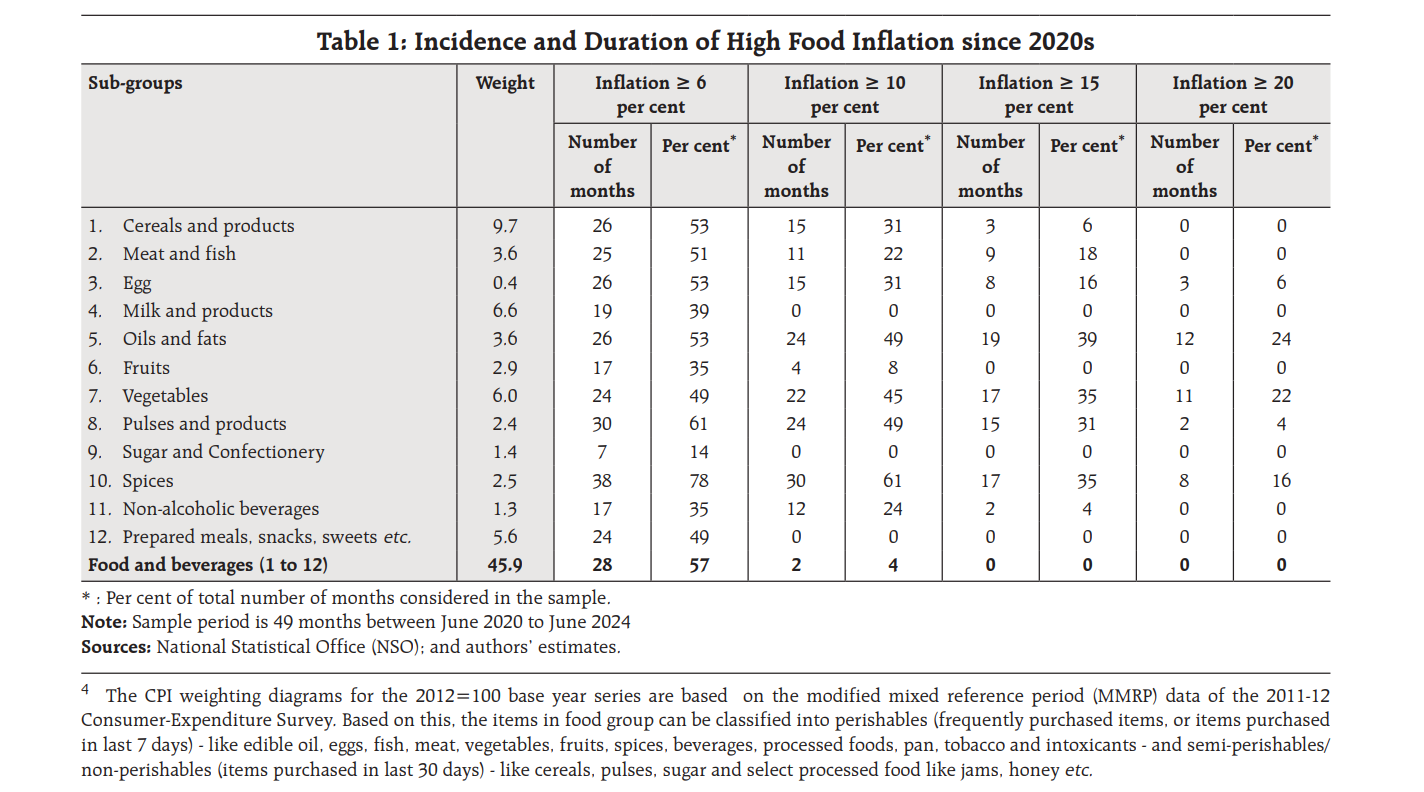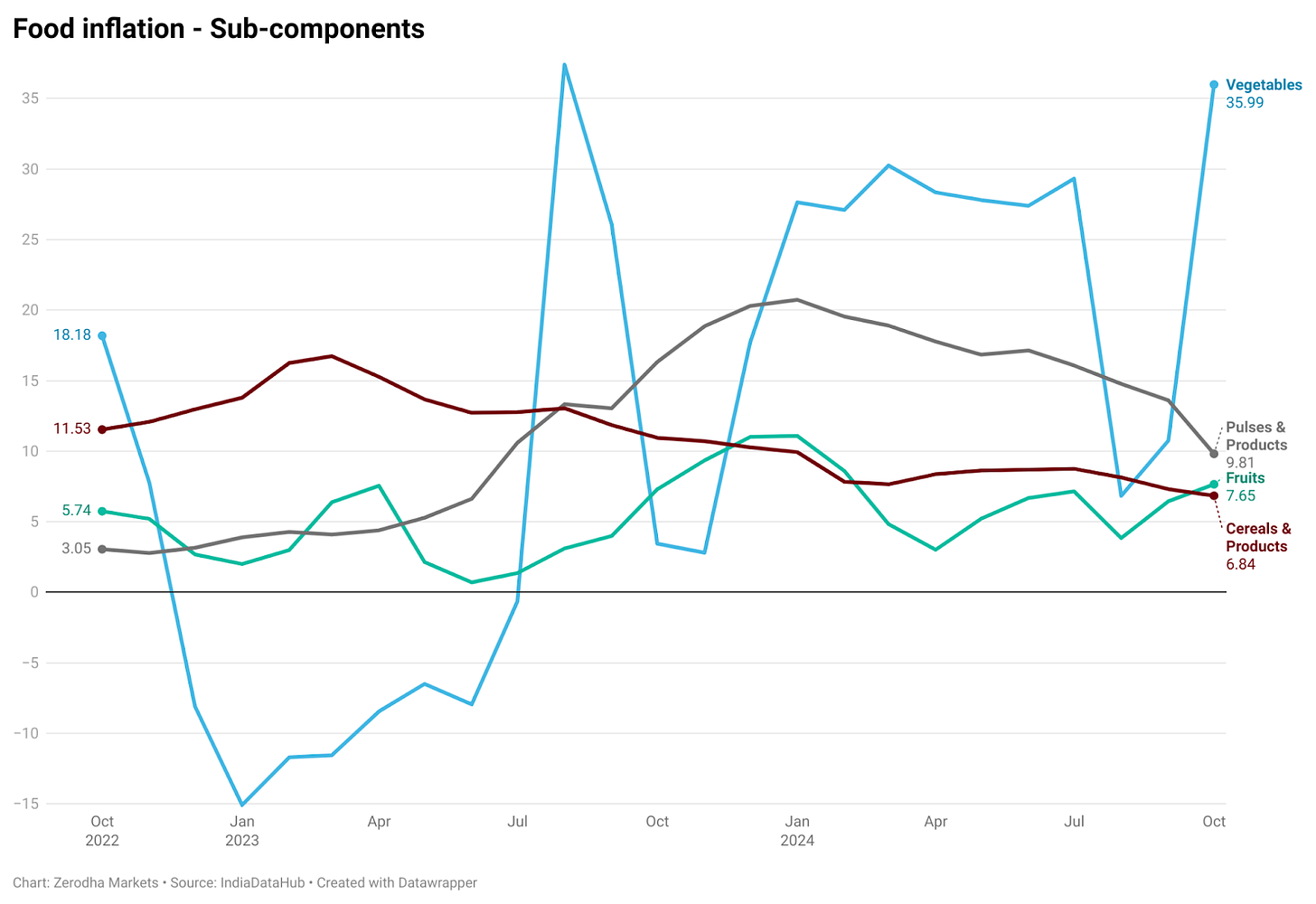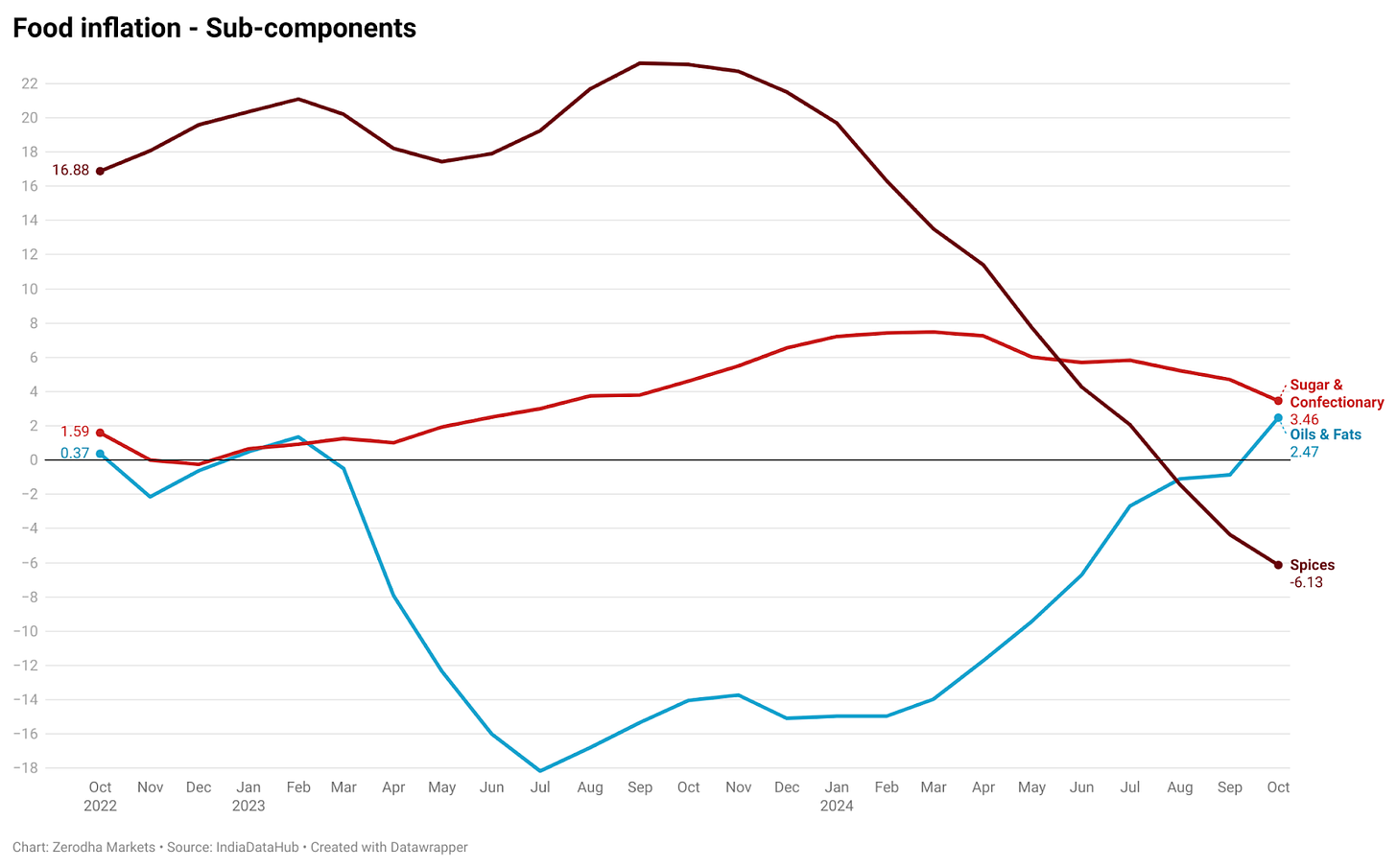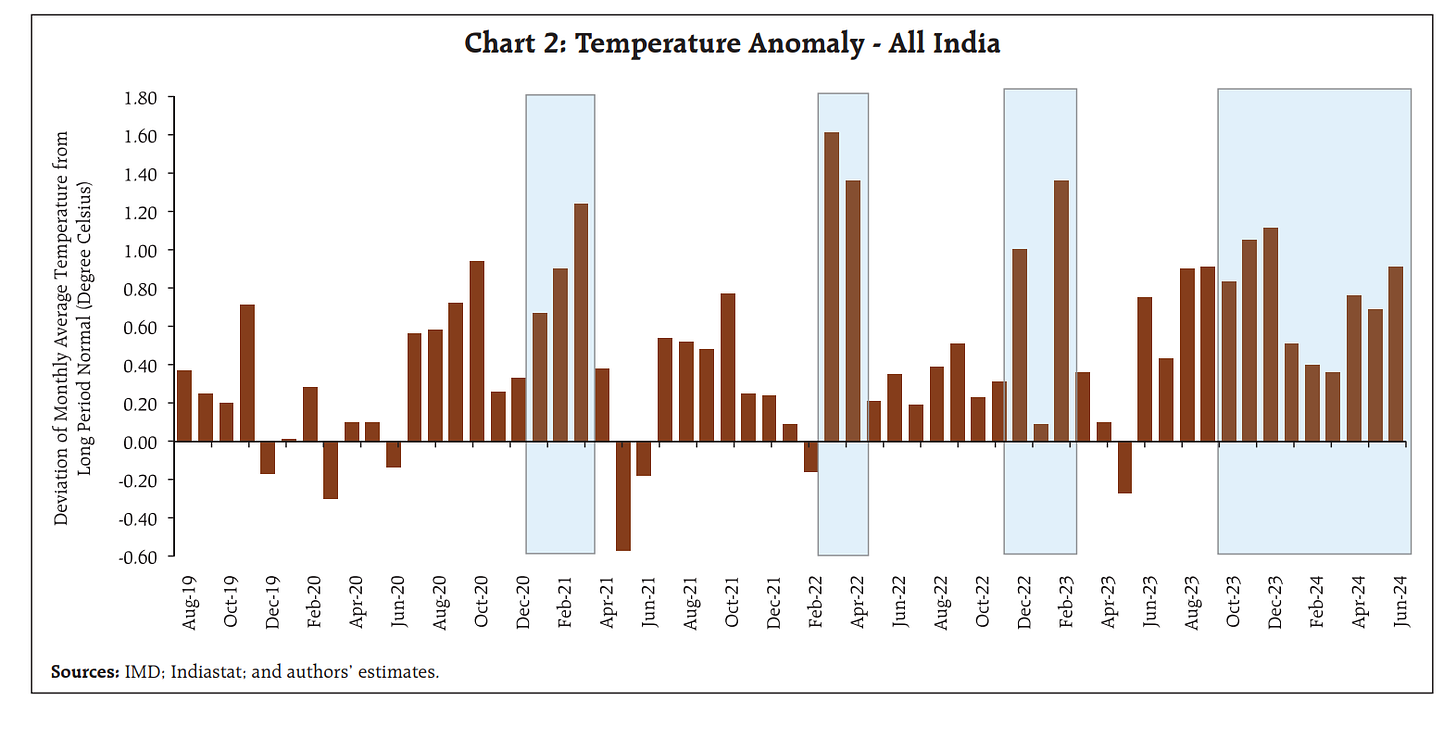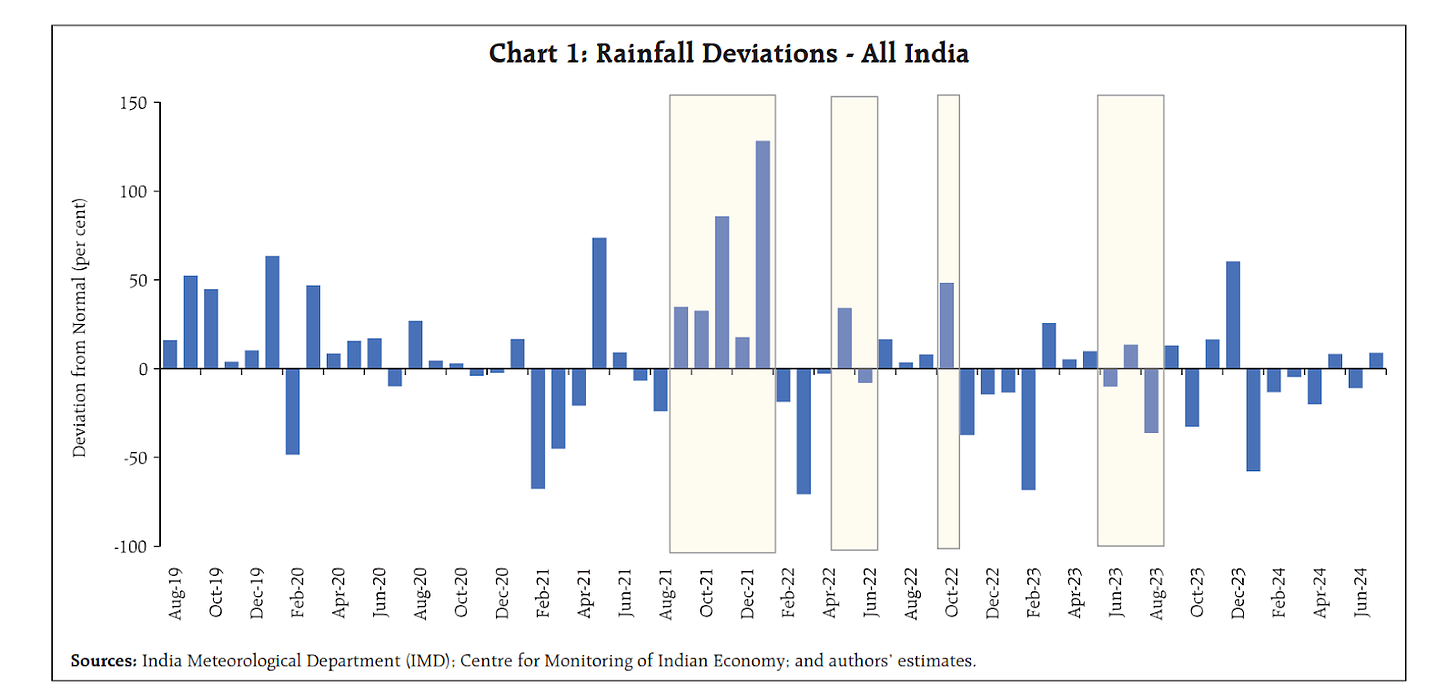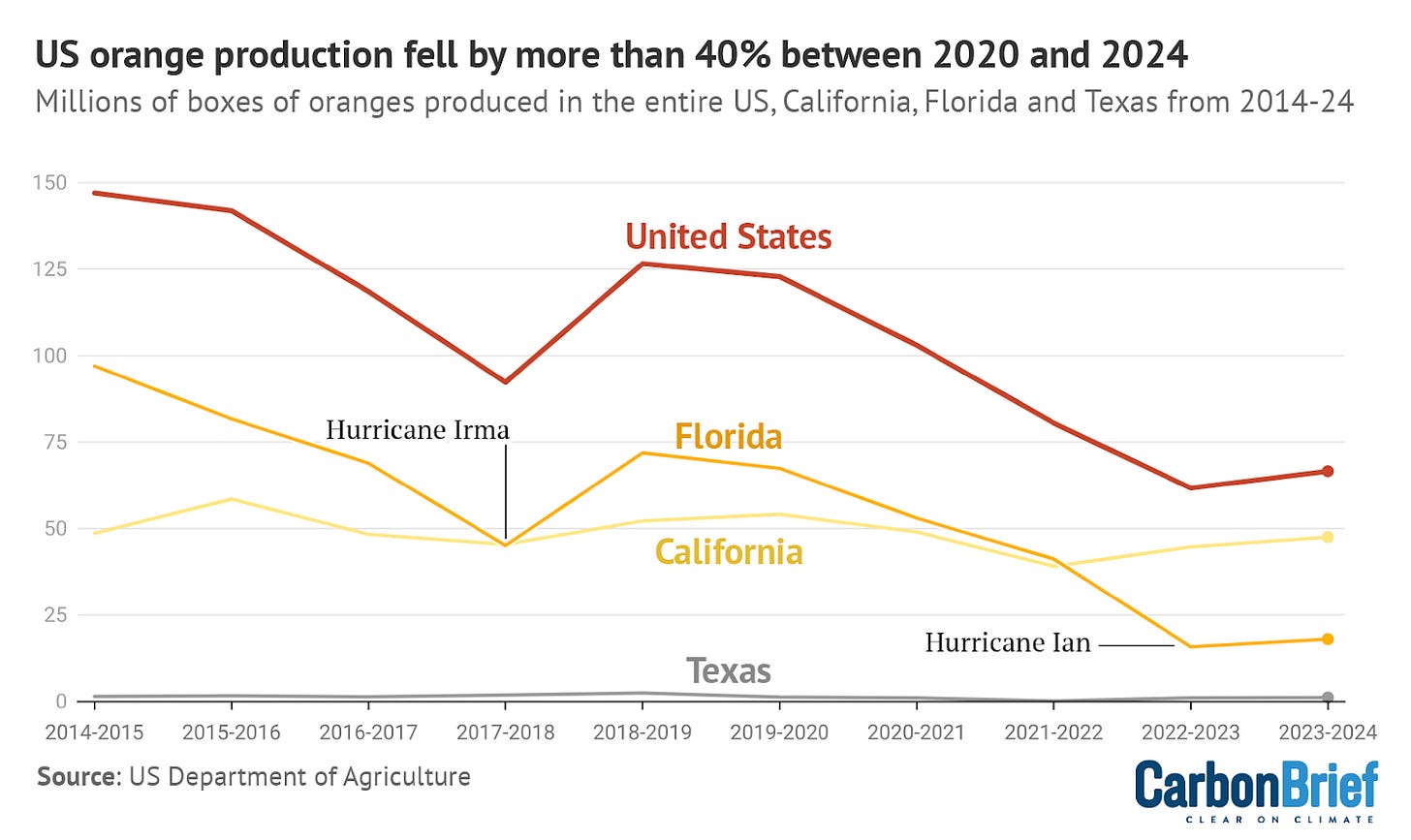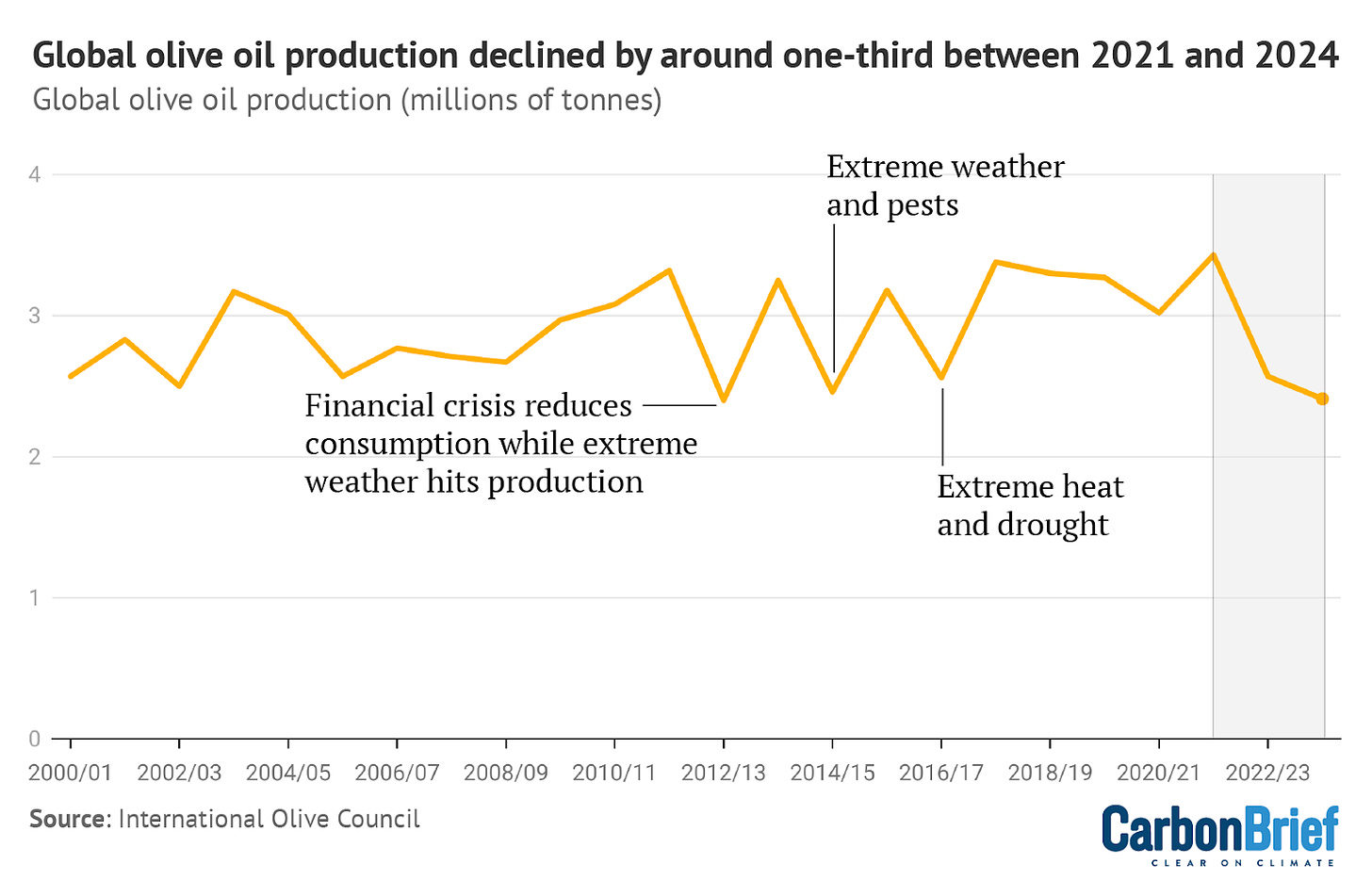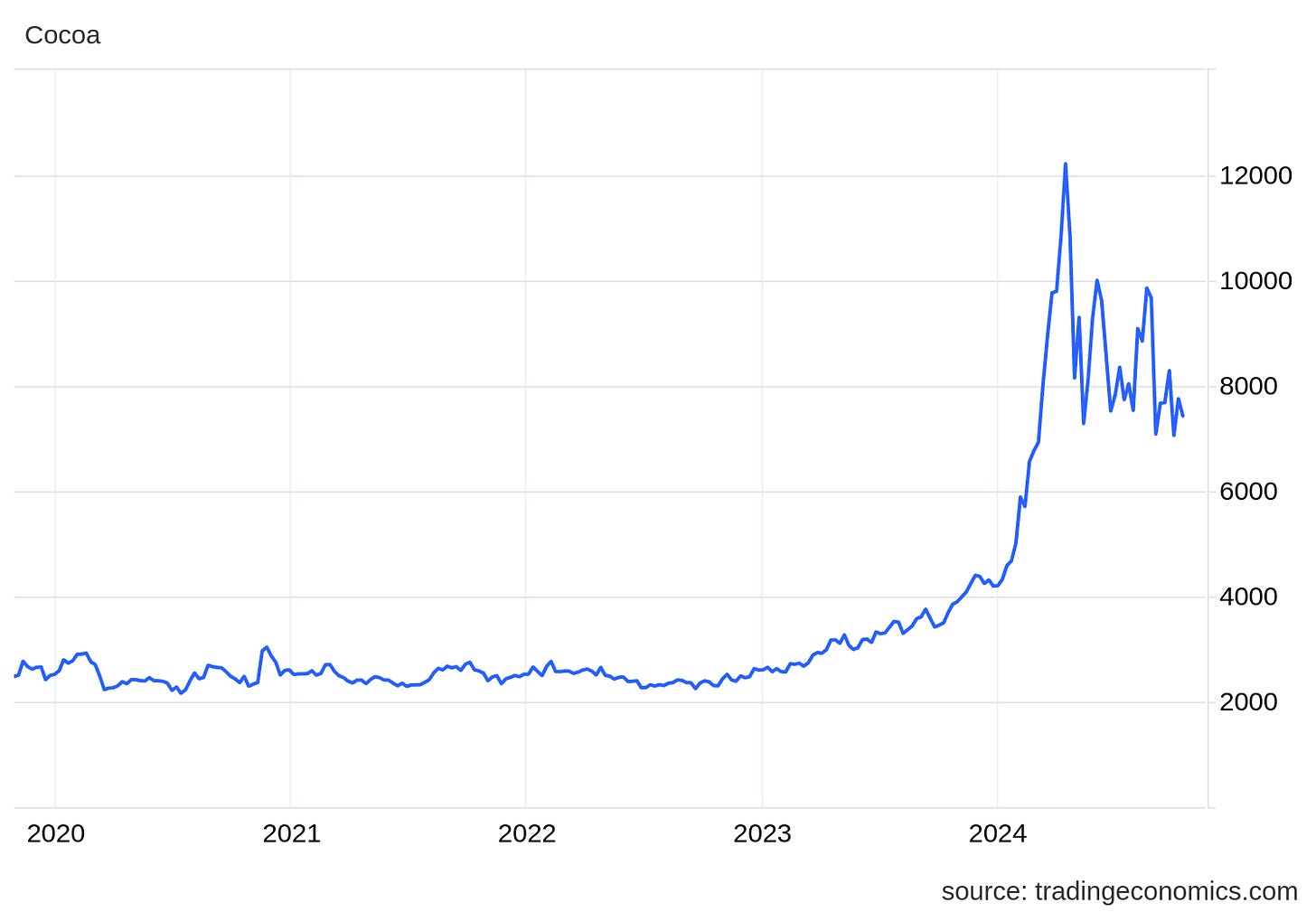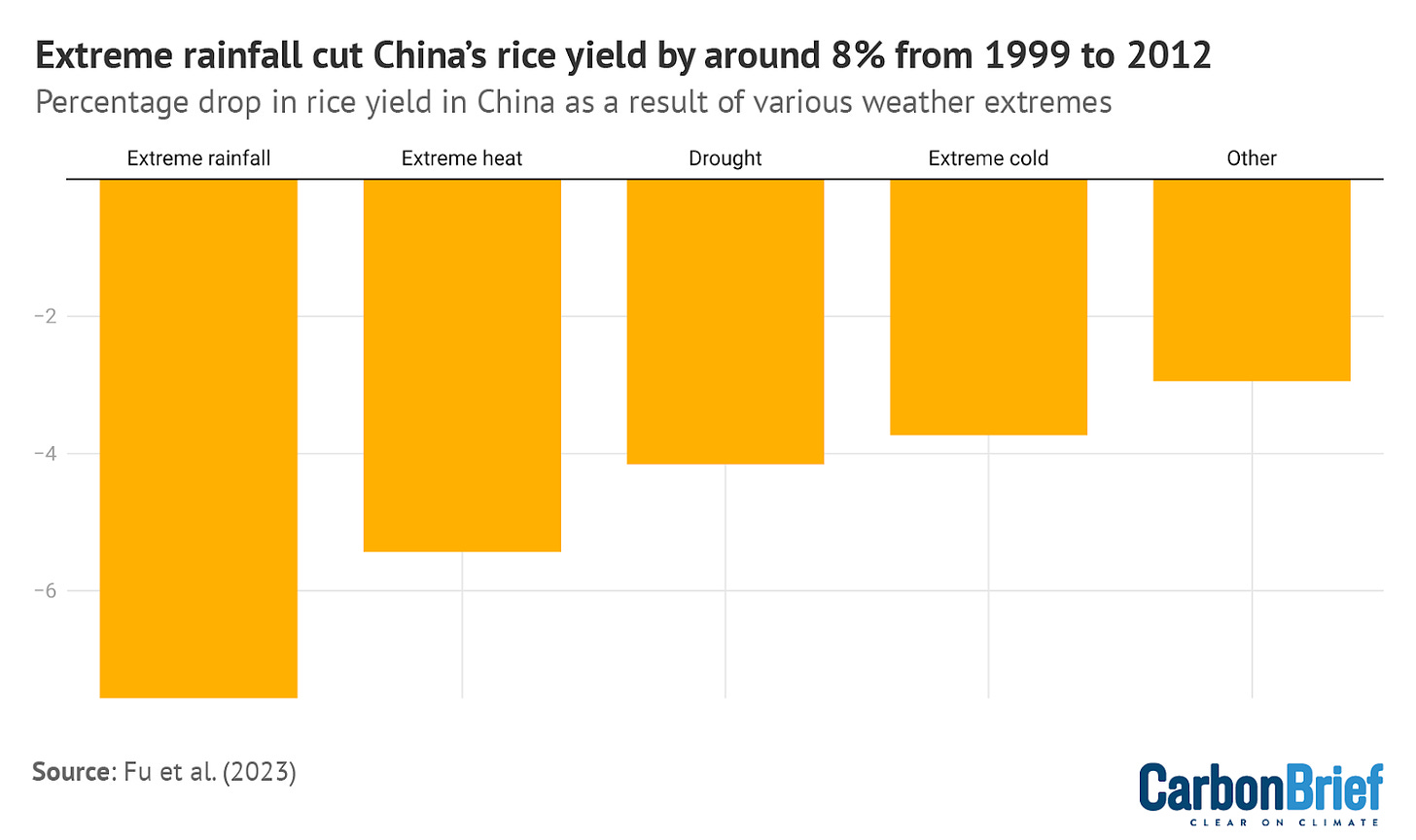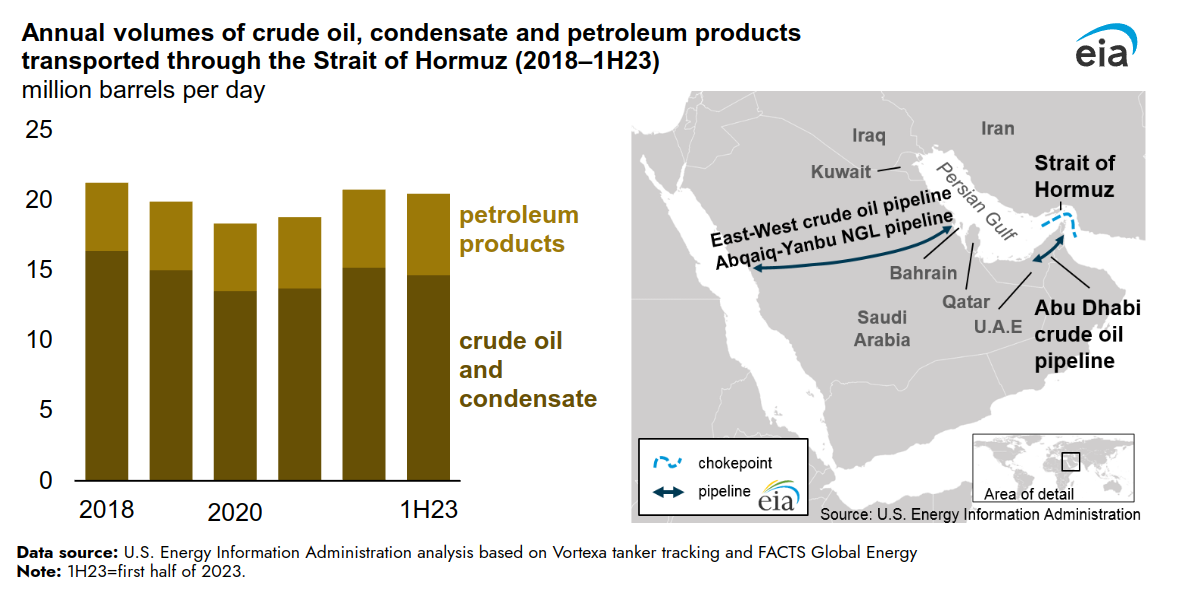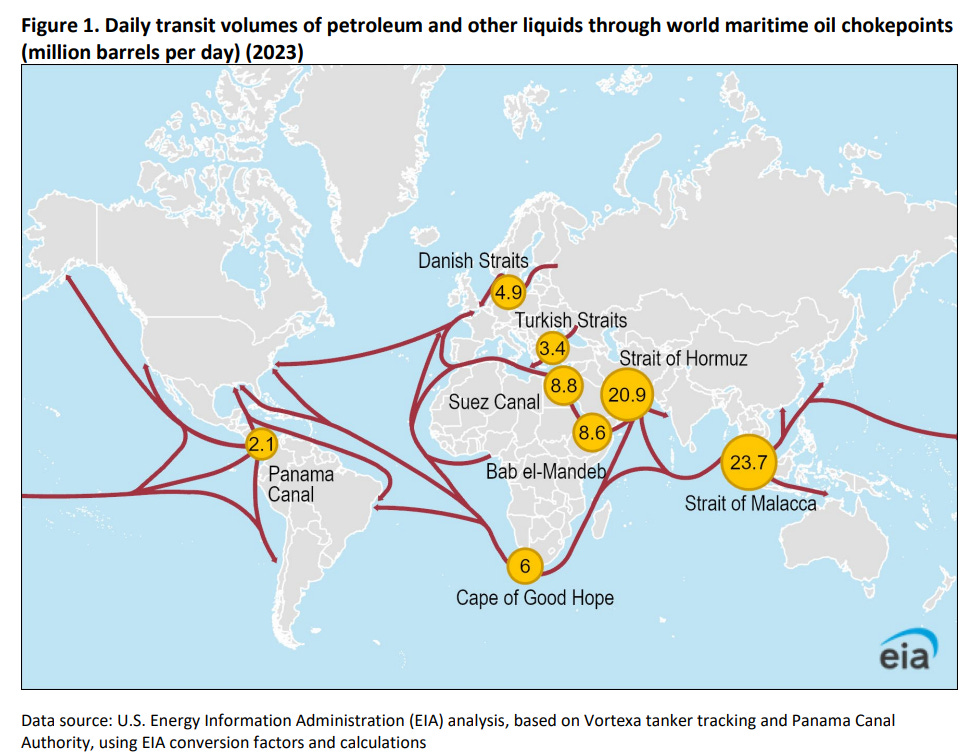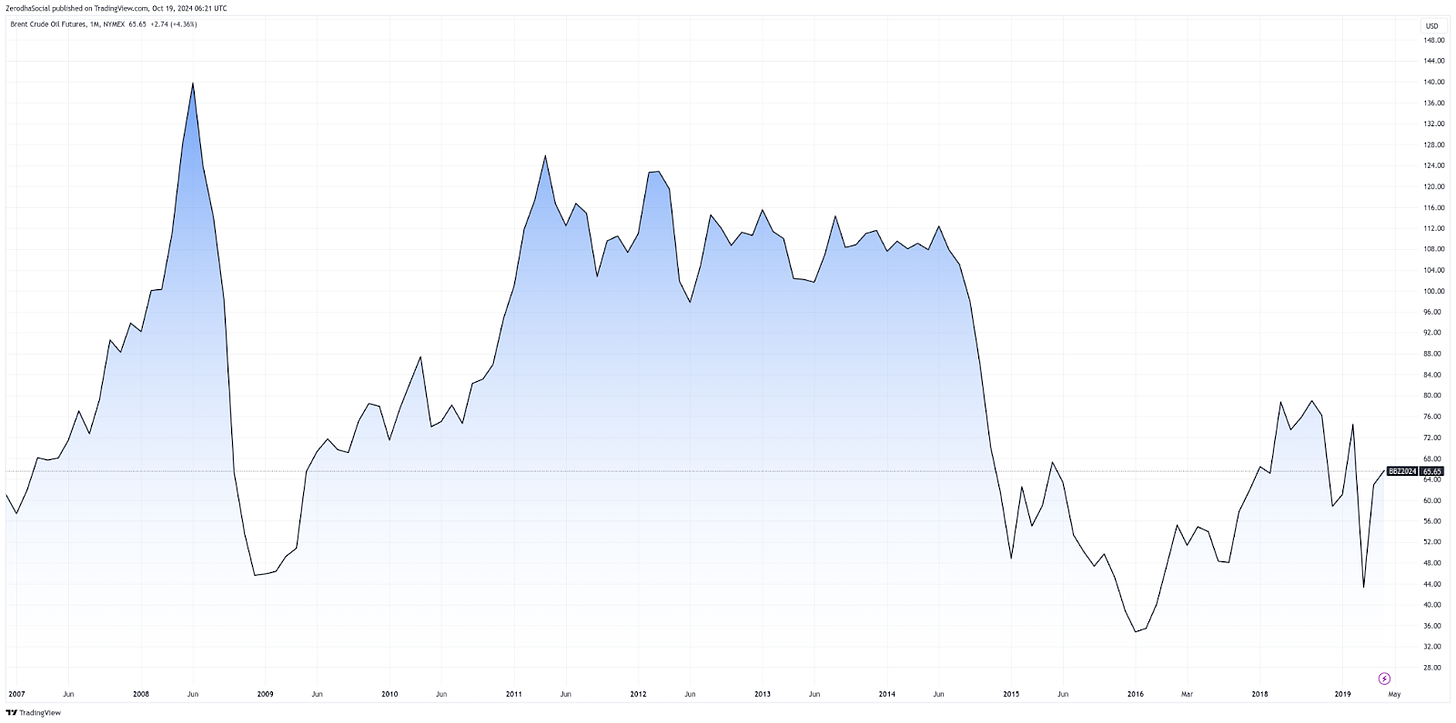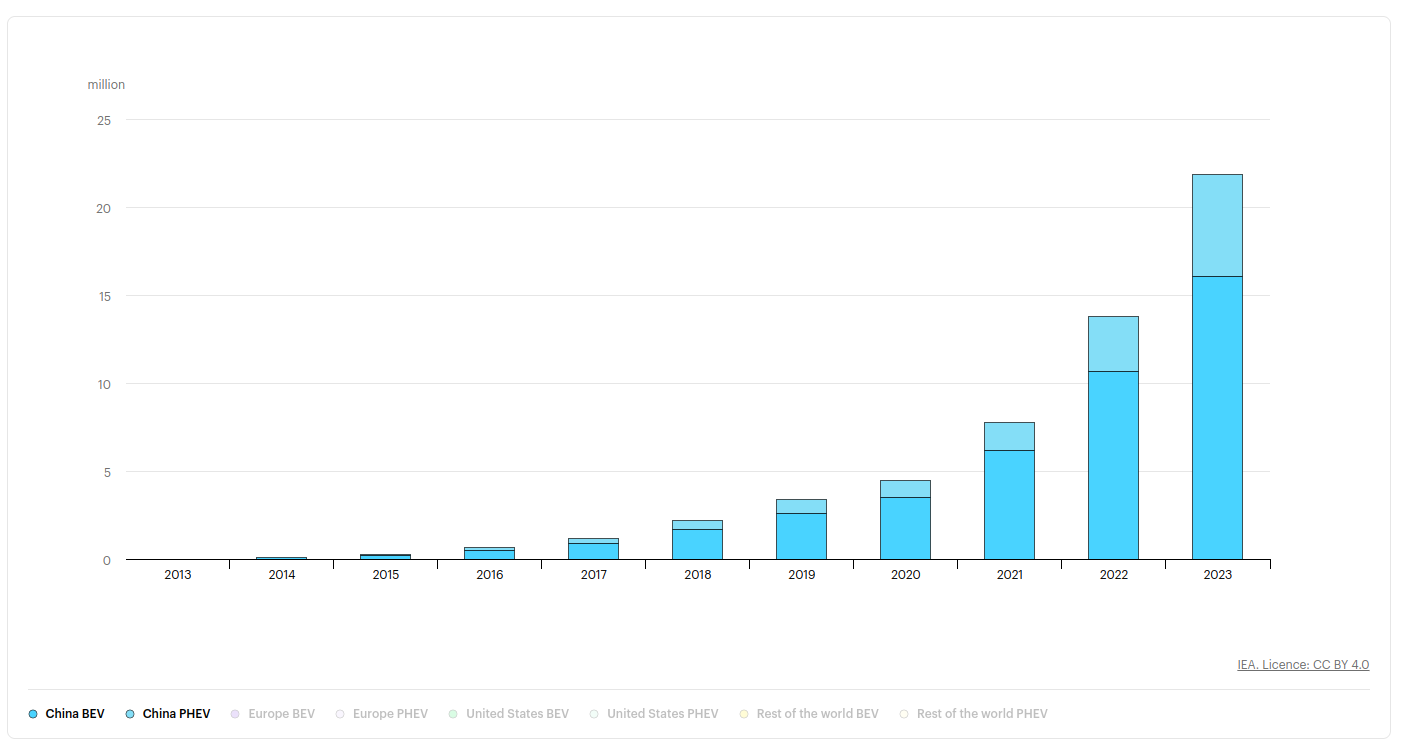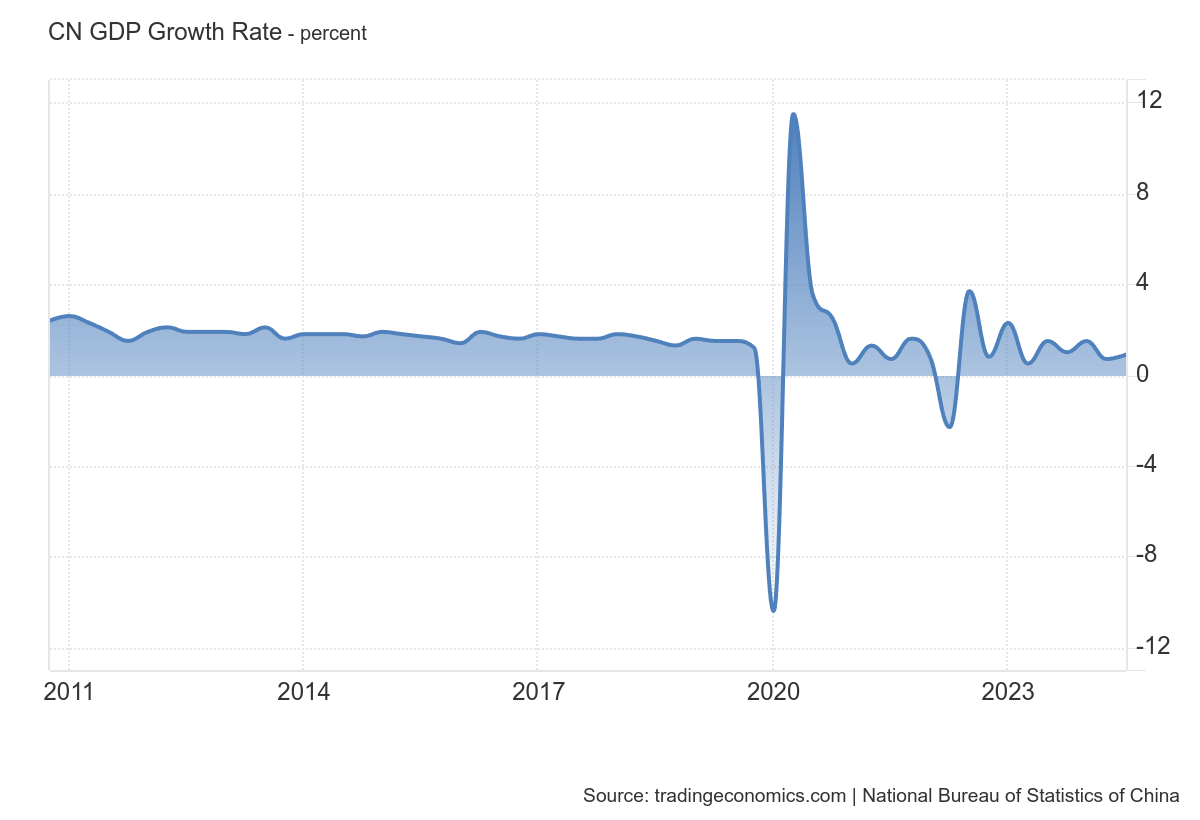On weekends, we used to compile the best stories of the week and release a recap for those who missed the Daily Brief during the week. However, many of you shared feedback that you listen to the Daily Brief regularly and would prefer not to hear the same stories repeated over the weekend.
So, we’ve been experimenting with the Weekly Brief, where we dive deeper into finance and economics, offering more insights than the daily editions.
It’s been a while since we released an experimental edition of the Weekly Brief, but we hope to make this a regular feature going forward. In this edition, we cover:
- Russia’s global influence and economy
- Food inflation and climate impact
- Oil markets amid geopolitical tensions
You can also listen to this as a podcast on Spotify, Apple Podcasts, or wherever you get your podcasts and video on YouTube.
Russia’s Invasion: A Catalyst for Change in Global Geopolitics and Energy
Russia doesn’t get the same headlines it used to, especially with the focus now on tensions in the Middle East. But it’s still a key player in the global economy, and it hasn’t been completely cut off despite the sanctions. It’s not as isolated as some might think, and that’s worth understanding.
Let’s start with why Russia still matters. First off, it’s one of the largest nuclear superpowers. That’s a big enough reason to pay attention to what happens there. But more importantly, Russia is still connected to the global economy, even if those ties have weakened. It’s not like Russia has become as isolated as North Korea or Iran.
Russia remains one of the top oil producers in the world. Depending on the data you look at, it’s either the third or fourth largest producer. About one in every six barrels of oil still comes from Russia, which means it’s responsible for roughly 5% of the global oil supply. That’s no small share, considering the world consumes between 100 to 105 million barrels of oil a day.
Beyond oil, Russia is also a major exporter of gold and coal. It’s a big player in the metals market too, providing key materials like nickel, copper, and palladium—essential elements for producing batteries and electric vehicles. So, it’s a vital part of the green energy transition.
One area where Russia has an especially significant impact is in fertilizers. Depending on the type—like nitrogen or potassium—Russia accounts for 15% to 25% of the global market. This matters because if fertilizer exports are disrupted, it can directly affect crop yields, leading to higher food prices and inflation that hits everyone in their wallets.
Source: USDA
In short, Russia isn’t completely isolated from the global economy. While the headlines might suggest otherwise, it’s still connected in many ways. So, it’s worth understanding how Russia’s economy is holding up, especially since the invasion of Ukraine in 2022.
That invasion marked a significant turning point—the first major armed conflict in Europe since World War II. Of course, there have been smaller regional conflicts—like the one in Ukraine that started in 2014, ongoing conflicts in various parts of Africa, and the frequent skirmishes in the Middle East. It wasn’t just another regional clash; it was a major confrontation that prompted the West to respond in a way that few expected. Before the invasion, the West wasn’t as united, but Russia’s actions pushed them to come together.
Source: OurWorldinData
Today, Russia is the most sanctioned country in the world. To put it simply, economic sanctions are a way for the West to respond to Russia’s invasion of Ukraine without going to war. Direct military action isn’t an option because Russia is a nuclear superpower, as we mentioned earlier. So, if direct conflict isn’t on the table, how do you respond? Sanctions become the tool of choice.
Source: Statista
Instead of direct military engagement, given Russia’s nuclear capabilities, the West opted for economic sanctions on a scale we haven’t seen in a long time. They targeted banks, trade, and individual assets, aiming to put economic pressure on Russia to make its war efforts more difficult. It was a way to wage economic warfare without firing bullets, hoping to make Russia reconsider its actions.
At first, it seemed like the sanctions were working. The Russian economy took a sharp hit, the ruble collapsed, and some celebrated what seemed like a downturn. But things didn’t quite play out that way.
Source: Tradingeconomics
One major reason is oil. In 2022, Russia’s economy shrank by about 2%, but in 2023 and 2024, it’s expected to grow over 3%. That might sound like a recovery, but it’s more complicated than that.
Source: Brookings
Right now, Russia is running what’s called a war economy. This means the primary focus is on supporting the war effort, with much of its spending directed toward producing military equipment like tanks, guns, and ammunition. Before the invasion, Russia spent around 3-3.5% of its GDP on the military. Now, that’s shot up to somewhere between 6% and 10%, meaning hundreds of billions of dollars are going into military-related industries.
Source: the bell
Unemployment in Russia is at a record low—about 2% based on the latest numbers. But we have to take these figures with a grain of salt, as Russia has stopped sharing a lot of economic data, making it harder to get a clear picture. Still, we know that the war economy has created a labor shortage. Russia needs workers for both the battlefield and the factories that support its military, a shortage worsened by the high number of soldiers lost in the conflict.
The Russian central bank has hiked interest rates to 19% to try to manage inflation, which is officially reported at 10%. But that number seems unlikely, and many believe inflation is actually higher, possibly around 15% or even 20%.
While Russia’s GDP might be growing, that doesn’t mean the economy is healthy. A lot of this growth is driven by increased military spending, which technically adds to GDP. But just because more tanks and weapons are being produced doesn’t mean life is getting better for everyday Russians. The ruble, which initially crashed, has stabilized, but only because Russia imposed strict capital controls.
The Russian economy isn’t collapsing, but it’s also not thriving. It’s running hot, but that comes with risks. The inflation pressures from such high military spending can only be contained for so long. Many experts believe that, while Russia might be able to maintain this pace for another year or two, eventually, it will feel the strain of running a war economy.
One academic put it this way: Russia is spending the equivalent of Ukraine’s entire GDP just on its military budget. That’s a huge amount of money, and it shows the sheer scale of this conflict.
So, in summary, while Russia hasn’t crumbled under the weight of sanctions, it’s not in a comfortable position either. The country’s economy is still running, largely thanks to its energy exports and a focus on military production, but the challenges are mounting. The next few years will likely reveal just how sustainable this path is.
Before the invasion, Europe relied on Russia for about 50% of its gas, mostly for power plants, as about 30% of all power plants in Europe are gas-powered. This meant that Europe and Russia were deeply tied together, more than they might have realized. Keep in mind the word “interdependent”—it’s important, and we’ll get back to it later because there’s some interesting history there.
When Russia invaded Ukraine in February 2022, Europe was caught off guard. It couldn’t just cut off Russian gas and oil immediately since it didn’t have any ready alternatives. Europe lacks its own energy production sources, which made the situation even more complicated. In response, the West, led by the US and Europe, imposed economic sanctions on Russia. But before Europe could fully cut off Russian gas, Russia took the initiative and cut off its own gas supplies to Europe.
This hit some European countries particularly hard. Places like Austria and Hungary depended on Russia for over 80% of their energy needs. Even Germany relied on Russia for 50% of its oil and gas, which was crucial not only for heating homes but also for powering industries. So, Europe found itself stuck between a rock and a hard place: showing support for Ukraine while still being dependent on Russian energy.
Source: IMF
By the time Europe started reducing its dependence on Russian oil and gas, it was already late 2022. From February to December of that year, Russia was still making hundreds of billions of euros from energy exports to Europe, because Europe simply didn’t have other options. In the first year of the war alone, estimates suggest that Russia made around 140 billion euros from these exports. This steady income from oil and gas sales is one of the reasons why Russia’s economy hasn’t completely collapsed yet.
However, this flow of revenue is facing challenges. When the war began, crude prices shot up to about $120 per barrel. Recently, they’ve fallen back to around $70-75 per barrel. This price drop means lower revenue for Russia, but it’s still manageable because Russia’s budget was planned around oil prices as low as $45 per barrel. Even with the price drop, Russia can keep going—it’s not thriving, but it’s not sinking either.
Now, Russia is putting almost all of its resources into the war effort, shifting spending away from social services like education and healthcare. This is leading to a very unusual situation. The Russian military-industrial sector, which is focused on producing tanks and weapons, is located in regions that were struggling economically before the war. Now, these areas have more jobs, and many people there are doing better financially than they have in years. But it’s a mixed bag. While many Russians are against the war, they’re also benefiting from the economic boost that war production is providing.
Source: The Bell
An economist named Elina Ribakova called this a “morose social lift,” meaning it’s a depressing kind of upward mobility. People in these regions are seeing economic improvement, but it’s tied to a conflict many don’t support. It’s a strange paradox: the war is terrible, but in some places, people are doing better financially because of record-low unemployment, which means wages are rising at a fast pace.
This brings up a big question: what’s the long-term outlook for Russia’s economy? After the invasion, many Western companies left Russia, and there was a wave of people—especially young and talented Russians—leaving the country. Plus, Western countries imposed tough sanctions, cutting off Russia’s access to essential technologies like chips and advanced machinery. This has left Russia with serious challenges, like a shrinking workforce due to war casualties and emigration, and limited access to global markets and technology.
Source: Aljazeera
Even though Russia’s economy might be holding up for now, the long-term outlook isn’t so bright. The country isn’t investing in education, healthcare, or infrastructure while it focuses on the war. This means that even after the war ends, Russia could be facing years of underinvestment and slow recovery.
Now, let’s take a closer look at the oil side of this situation. As we mentioned earlier, Russia is still a major oil exporter, and its oil is still flowing into the global markets. This is a big part of why Russia’s economy hasn’t collapsed yet. Here’s how it has been managing this:
From February to December 2022, Europe was still buying Russian gas and oil, simply because it couldn’t replace those supplies quickly enough. But in 2023, Europe tried to stop buying Russian energy altogether. Still, countries like Austria, Hungary, and Slovenia had no choice but to keep buying Russian gas, so the flow didn’t stop completely. Europe’s reliance on Russian gas went from 50% to about 15%—a big drop, but not zero.
Source: Eurostat
To manage this transition, the West imposed a price cap of $60 per barrel on Russian oil. The rule was that if Russia wanted to use Western shipping companies or insurance to transport its oil, it couldn’t sell the oil for more than $60 per barrel, even if the market price was higher. This was part of an effort to limit Russia’s income from oil exports.
But here’s the catch: not everyone followed these rules. Many countries outside of Europe and the US—like India, China, Turkey, and others in Africa and Asia—didn’t participate in the sanctions. Instead, they became major buyers of Russian oil.
For instance, India’s imports of Russian oil went from almost zero to around 40-45% of its total oil imports. So while Europe was trying to cut ties, other parts of the world stepped in, buying up Russian oil and filling the gap. This helped Russia keep its oil revenue flowing and cushioned the economic blow of losing its European customers.
Source: KSE
Meanwhile, the US and Norway stepped up to supply Europe with the gas it needed, showing just how interconnected the global energy market is. The situation isn’t ideal for anyone involved, but it shows how complicated these energy relationships are. Even with all the sanctions, Russian oil is still a key part of the global economy, and the effects of the conflict reach far beyond Russia and Ukraine.
It’s easy to see this situation in moral terms, but the reality is that we’re still a developing country and a net importer of oil. We spend around $180 billion to $200 billion a year on oil, depending on the price, and we import about 80-90% of our oil. This makes oil a critical part of our economy. When oil prices go up, we feel the impact directly at the petrol stations, which hits our wallets hard. So looking at this purely from a moral perspective might not be the right approach given our dependence on oil.
Now, let’s talk about Russia. After its invasion of Ukraine, Russia started selling its oil at a discount. Depending on the source, the discount per barrel of Russian oil was between $20 to $30 at its peak, and now it’s around $3 to $5 a barrel. This was a major discount, which meant that countries like India saved billions of dollars by importing Russian oil. This wasn’t just a win for India; it also benefited China, Turkey, and other big importers of Russian oil. Russia quickly found new buyers in India and China, redirecting the oil it used to send to Europe.
India and China didn’t have to follow the price cap imposed by the West. Only the Western economies chose to observe that rule, so Russia could technically sell oil above the $60 price cap. But since Russia was eager to find buyers and India and China were willing to purchase, they sold it at a discount. Estimates suggest that the price cap, combined with sanctions on Western shipping and insurance companies, reduced Russia’s oil earnings by about $50 billion. But despite these losses, Russia still managed to make over $200 billion from oil sales to countries like India, China, and Turkey during the war.
The Western strategy to isolate Russia completely didn’t work as intended. And honestly, it couldn’t have. Cutting a major oil exporter like Russia out of the global market would have caused oil prices to skyrocket. The first place people feel the impact of rising oil prices is at the petrol pump, and that hits home fast. When prices go up, people start complaining, and it becomes a political issue—especially in an election year like 2024 in the US, where inflation is a hot topic. The same goes for Europe.
When Russia was producing around 10 million barrels of oil a day, the West couldn’t afford to keep all that supply out of the market. Even with only partial cuts to Russian production, oil prices spiked to $120 a barrel. If Russia had been completely cut off, it’s possible prices could have reached $200 a barrel, creating a global economic crisis.
So while the West aimed to hurt Russia with sanctions, they also needed to avoid a full-blown energy crisis. But Russia had a backup plan. Even after Western shipping companies—who dominate the global oil transport industry—were barred from working with Russia, Russia found a way to keep selling oil to countries like India and China.
This is where Russia’s creativity came into play. They put together what’s known as a “shadow oil fleet.” Russia spent billions of dollars buying up old oil tankers that were nearing the end of their useful life. These ships, some as old as 27 to 30 years, are risky to use because they can break down or have accidents. Without insurance from Western companies, Russia turned to less reliable options, but it kept the oil flowing.
Estimates suggest that Russia assembled a shadow fleet of around 400 to 650 ships to transport oil to India, China, Turkey, and other countries. This fleet operates outside the Western sanctions and continues to grow, with Russia buying more ships as we speak.
Source: Geopolitical Futures
In addition, Russia took advantage of Dubai’s position as a global trading hub. After Switzerland, home to major oil trading companies like Vitol, Gunvor, and Trafigura, decided to observe sanctions, much of the oil trading activity shifted to Dubai. In no time, a network of middlemen, shell companies, and traders emerged in Dubai to handle Russian oil sales. The UAE, which remained neutral, allowed this shadowy system to thrive, helping Russia continue its oil exports.
And when it comes to payments, there were reports that India was paying Russia in rupees, but it’s more likely that transactions were in dollars, as that’s what Russia needs. Some reports even mentioned bartering, like trading oil for Indian goods such as bananas, which sounds surprising but shows how countries adapt to such situations. Meanwhile, Russia and China had a close relationship, often referred to as a “no limits friendship,” which helped Russia find a stable buyer in China.
As a result, Russia is now exporting over 70% of its oil through this shadow fleet. Depending on oil prices, Russia is expected to earn between $150 billion to $200 billion this year from oil sales alone, which is enough to keep its war efforts going. Even though Europe has reduced its reliance on Russian gas and oil, it hasn’t stopped completely—current dependence is still around 10-15%. So, despite sanctions, Russia found a way to keep the money flowing.
Source: Consilium
However, it’s not all smooth sailing for Russia. The price cap and sanctions have still cost Russia billions. And while its economy is managing for now, long-term challenges remain, like a shrinking population, inflation, and a lack of access to advanced technology. In the short run, Russia is holding on, but the long-term outlook isn’t as positive.
Now, let’s get back to those contradictions I mentioned earlier. Europe tried to cut off its reliance on Russian gas, but countries like Austria and Hungary are still importing it, so it’s not zero. And despite Western efforts, not all countries agreed to isolate Russia. Many, including India, China, and large parts of Africa, stayed neutral and continued trading with Russia to serve their own interests. This allowed Russia to keep exporting essential goods like food and fertilizers, which aren’t under sanctions because cutting them off would harm poorer countries the most.
For example, Russia is one of the largest exporters of wheat, which many developing countries rely on. Sanctioning wheat exports would have hurt countries in Sub-Saharan Africa, leading to food shortages. The same goes for fertilizers—Russia and Belarus supply a significant portion of the world’s potash, a key ingredient in fertilizers. Cutting off these supplies would have disrupted food production worldwide.
Source: Statista
Source: World Bank
And even though many Western companies left Russia, and the country lost access to some advanced technologies, Russia found ways around this too. It used “transshipment” tactics, getting friendly countries like those in Central Asia, China, and others to buy technology on its behalf. Even consumer goods like microwaves and washing machines were being imported and stripped for chips to use in weapons.
Source: CEPR
All of this shows that sanctions, while they can be painful, aren’t always as effective as intended. They didn’t stop Russia from going to war, and they didn’t bring its economy to its knees. Instead, they shifted the focus from trying to prevent the war to simply trying to weaken Russia’s ability to fund it.
And enforcement of these sanctions has its own challenges. Even in the US, the office responsible for monitoring sanctions, OFAC, is often understaffed and relies on basic tools like Excel spreadsheets to track violations, which makes it hard to keep up. Meanwhile, Europe doesn’t have the same enforcement capabilities.
The broader impact of these energy disruptions was especially harsh on poorer countries. For instance, when Europe was desperate for gas, it diverted shipments that were initially destined for countries like Bangladesh and Pakistan. As a result, those countries faced severe blackouts, affecting industries and millions of people. This happened during some of the worst heatwaves, making the situation even more unbearable. With Europe outbidding them for gas, they struggled to keep the lights on and the air conditioning running.
In the end, this story is full of contradictions. It’s not a simple tale of right and wrong—it’s a complex web of economic survival, political decisions, and the harsh realities of global interdependence.
Europe often presents itself as a champion of the green transition and fighting climate change, but there’s a clear contradiction here. While they talk about investing in a sustainable future, they were effectively diverting gas away from some of the poorest countries in the world—countries that desperately needed energy to keep the lights on for their people. This, to me, was the most disheartening part of the whole situation.
Now, let’s shift focus to Russia’s long-term future following its invasion of Ukraine. Many in the West might not fully appreciate just how significant this event is. It represents a massive shift in global geopolitics, and the consequences of this conflict will likely affect us for decades. We haven’t fully grasped the scale of what has happened, how the West reacted, and the impact of a nuclear superpower trying to occupy a smaller country. One immediate effect is that the world seems to be splitting into different blocs.
For a bit of context, after World War II, and especially after the collapse of the Soviet Union in the 1990s, we lived in a world where the United States was the dominant superpower. The world was relatively stable because it wasn’t in most countries’ interest to challenge the U.S. Even as China rose to power, the U.S. remained dominant. Yes, there were troublesome nations like Iran, North Korea, and Venezuela, but they didn’t pose a direct challenge to U.S. dominance.
But then came Russia. It never fully embraced the idea of living in a world where the West called the shots—whether that was about global trade, finance, or political ideologies. For reasons that are complex and hard to pin down, Vladimir Putin decided that he no longer wanted to accept this Western-dominated order. He invaded Ukraine, whether out of a sense of duty to protect Russian interests or for self-preservation—historians have tried to explain it, but it’s difficult to fully understand his motives.
This invasion forced the world to pick sides. You were either with the U.S. and its allies or with Russia, which naturally aligned with countries like China, Iran, North Korea, and Venezuela. Now, the world has two competing superpowers, and there’s an ongoing hot war in Ukraine, along with rising tensions in the Middle East, involving Iran—a country aligned with this so-called “axis of authoritarianism” alongside Russia and China.
But not every country has picked a side. Many, like India, Turkey, and large parts of Africa and Asia, have chosen to remain neutral—much like during the Cold War. They’ve said, “This isn’t our fight; we have our own challenges to deal with.” So now the world is split into three broad blocs: the Western powers, the pro-Russia and China camp, and a large non-aligned group. This is affecting trade, finance, and international relationships. It’s a sharp contrast to the post-Cold War era when the U.S. set the rules. Now, more countries are choosing to go their own way, leading to a much more fragmented world.
This brings a lot of uncertainty, and many historians are drawing parallels to the lead-up to World War I. Back then, a series of regional conflicts pulled in the major powers and eventually escalated into a global conflict. Today, we see a similar pattern: the Ukraine conflict has drawn in the West, the tensions in the Middle East between Israel and Iran are heating up, and there’s concern about what China might do with Taiwan. If China were to invade Taiwan, the U.S. has vowed to support Taiwan, which could pull everyone into a larger conflict. It’s a worrying scenario, and while it’s not inevitable, it’s also not far-fetched. We are living in a far more dangerous world than we have in the past few decades, and it’s frankly unsettling.
This is one major consequence of Russia’s invasion of Ukraine: the world is more divided than before, and countries are being forced to take sides. As the war continues, both in Europe and the Middle East, we’ll have to wait and see how this all unfolds.
Now, let’s turn to the future of Russia itself—not just its economy, but the country as a whole. For this, I’ll lean on the insights of Stephen Kotkin, a well-known historian who has studied Russian history extensively. He outlined six potential futures for Russia without necessarily predicting which one is most likely—because, as historians often do, he leaves room for uncertainty.
- Russia Becomes France: This future imagines a Russia that follows a path similar to France’s, transitioning from an autocratic past to a stable democracy. Just as France moved on from monarchs and became a peaceful democracy, this scenario suggests Russia could do the same. It’s not very likely, but it’s not impossible either.
- Russia Remains Authoritarian but Withdraws: In this scenario, Russia stays an authoritarian state but decides to focus inward rather than causing trouble abroad. It would continue to repress its citizens at home but might decide that the costs of foreign adventures aren’t worth it. This seems a bit more realistic than the first option.
- Russia Becomes a Vassal State of China: This scenario is, in our opinion, quite plausible. Here, Russia becomes increasingly dependent on China economically and militarily. We already see this happening as China has stepped up its support for Russia, even if it’s not providing the latest weapons. Historically, the Soviet Union was the stronger partner, but now the roles have reversed, with Russia relying heavily on China as a lifeline.
-
Russia Turns into North Korea: This would mean Russia becomes isolated and cut off from the global economy, constantly threatening other countries with its nuclear arsenal but not actually using it. It would be a heavily sanctioned, isolated state, similar to North Korea. It’s less likely than the third scenario, but if the war drags on, it could become a reality.
-
Russia Becomes a Chaotic State: This scenario envisions a collapse of the current Russian government, leading to chaos and instability. If Vladimir Putin is removed from power or dies, there might be no strong leadership to hold the country together. This could lead to widespread unrest and turmoil, a breakdown of the political and economic systems. While authoritarian regimes can appear strong, they can also be surprisingly fragile, making this a possibility.
-
Russia Becomes a Beacon of Democracy: This is the most far-fetched scenario, where Russia somehow transforms into a democratic and culturally rich nation, contributing to global progress. It’s hard to imagine given the current state of affairs, but Kotkin includes it as a possibility, even if it seems like a long shot.
These six scenarios provide a framework to think about Russia’s potential futures—not just as an economic player but as a significant force on the global stage. Each path would have different implications for the world, and it’s hard to say which one is most likely. What’s clear is that Russia’s actions have reshaped global politics in a way that we’re only beginning to understand.
So, even though it took some time to go through all of this, it was worth exploring because a lot of people assume that Russia no longer matters. The truth is, it still matters in more ways than one, and the outcomes of this conflict will shape the world for years to come.
Food Inflation
Inflation hits us directly where it hurts—in our wallets. So, it’s important to pay attention not just to what’s happening with inflation, but also to understand its various dynamics. As we’ve discussed before, inflation is a topic we frequently cover in our daily updates, and we continue to explore new and interesting angles on it.
One of the more interesting aspects for us is how volatile food inflation has been over the last five years. While digging into the data would have taken a lot of time, thankfully, we didn’t have to because the Reserve Bank of India (RBI) publishes a monthly bulletin that’s worth checking out. It includes plenty of insightful research on both the Indian and global economies.
In their August bulletin, the RBI published a study on the persistence of food inflation, showing that it has become more consistent than before. Honestly, the findings were a bit alarming. According to the study, food inflation averaged about 6.3% after 2020, compared to just 2.9% in the years before. Why is this happening? The authors point to several reasons, with most of them tied to climate issues. Specifically, the distribution of monsoon rains has been uneven. Even if we have a good year overall, some key agricultural regions might not get enough rainfall. So, despite a strong monsoon season, the end result is still higher food inflation because of lower production in some areas.
On top of that, there have been abnormal heat waves, which is something we’ve talked about in our daily brief. These heatwaves reduce agricultural production, leading to shortages and price hikes. The intensity of these climate events—like erratic monsoon patterns and severe heatwaves—has increased a lot compared to the years before 2020.
Source: Ourworldindata
All of this is tied back to climate change and global warming. At this point, there’s a mountain of evidence showing that each year sets a new record for global temperatures, and this has been happening for over a decade. Climate change directly impacts agriculture. Heatwaves and irregular monsoons put pressure on farmers, and it’s especially concerning when we think about the regions that are most vulnerable to these shifts. Places like Africa, Asia, and Southeast Asia are particularly exposed.
For many of us in India, food insecurity isn’t something we typically worry about. But step outside of India, and it’s a different story. COVID-19 made things worse for poorer countries, pushing millions into a state of acute hunger. Some estimates suggest that between 300 to 400 million people worldwide are now at risk of severe hunger. If climate change continues at its current pace, these numbers will only rise, putting more people at risk than ever before.
Source: OurWorldinData
The statistics of the study in India highlight just how bad food inflation has been since 2020. For 57% of the months between June 2020 and 2024, food inflation stayed above 6%. Even more worrying, from June 2022 to June 2024, inflation in many food categories was in double digits for half of the months. Items like pulses and oils were especially affected.
Even though the headlines might suggest a good monsoon, the reality is more complex. In key agricultural regions like Punjab, monsoon rains have been uneven, unlike in the southern parts of India. This imbalance poses a risk even as we speak. Plus, when we look at the prices of essentials like tomatoes and onions, they’ve jumped 30-40%. The lingering effects of past heatwaves play a part, but there’s also a growing threat from crop diseases due to abnormal weather. These trends, seen from 2021 to 2024, show how climate events can drive prices up sharply.
Source: RBI
Source: RBI
But this isn’t just an Indian issue—climate change doesn’t respect borders. Globally, rising temperatures are affecting a variety of crops. For example, this year alone, orange prices have surged because of climate challenges faced by Brazil and the United States, the two biggest orange producers. Brazil’s orange harvest hit a 36-year low due to diseases and extreme weather. In Florida, hurricanes have severely impacted orange crops. The intensity of these storms has only increased over the past few decades, and climate change is a major factor.
Source: OurWorldinData
Source: CarbonBrief
The story is similar with olive oil. While we in India might not use much olive oil unless we’re focused on health or sustainability, it’s a staple in Mediterranean countries like Spain. But due to droughts, heatwaves, and erratic rains, global olive oil production dropped by about 30% between 2020 and 2024. Prices in European countries surged by 50-70%, and for an everyday cooking item, that’s a massive increase. Who suffers the most? It’s always the poorest, who spend a larger part of their income on food. If a poor family is forced to spend more on food, they might have to cut back on essentials like healthcare or education.
Source: Carbon Brief
And it’s not just olive oil—cocoa production has also been hit hard. Countries like Ghana and Ivory Coast have seen drops in production due to heat, diseases, and poor weather conditions. The cocoa industry, which includes big chocolate brands, has felt the impact, though it’s not as critical as shortages in essentials like rice or vegetables.
Life is tough for farmers who are constantly at the mercy of market prices they can’t control or the whims of nature. As climate events become more severe and frequent, it’s harder for farmers to bounce back. In many countries, individual farmers still play a huge role in agriculture, and in India, it’s a major source of employment. If things continue to get worse, the broader economy will feel the impact too. It’s a sobering reality, but it’s one we need to face.
Source: Carbon Brief
Rice is another crucial crop facing challenges. In China, for example, production has dropped due to heat waves and irregular rainfall. Considering how much rice China consumes, this is a big deal. But it’s not just about rice—almost every major food item, from potatoes to tomatoes, has been impacted. If you’ve heard your parents complain more frequently about rising onion and tomato prices over the past few years, this is why. These climate-driven changes hit us both in our wallets and our kitchens.
Global Oil Dilemma from Gulf to Pump
We’ve talked about oil many times in our daily brief and for a good reason. Just like food inflation, fuel prices affect our daily lives. When you visit the petrol pump two or three times a week, it’s hard not to notice if prices keep rising. It’s frustrating because it hits our pockets directly. In fact, food, shelter, and energy—including fuel—make up the biggest part of a household’s budget. If we had to put a number on it, probably half or more of what we spend goes to these three items. So, it definitely matters.
As we’ve mentioned before, India is a net importer of oil—about 80 to 90 percent of our oil comes from the global market. We have very little domestic production. This means that any changes in global oil prices directly impact us. While wealthier people might be able to absorb these costs, it’s a bigger burden for people like us.
One major factor affecting oil prices right now is the rising tension in the Middle East. Recently, there’s been a back-and-forth between Iran and Israel. In April, Iran attacked Israel in response to an earlier attack on its embassy, which led to casualties. This was a major escalation and caused concern around the world. The reason? The Middle East is a critical region for oil production and transportation.
More recently, on October 1st, Iran attacked Israel again after Israel targeted leaders in Lebanon, including Hassan Nasrallah. This raised fears of further escalation in the region that produces more than 30 percent of the world’s oil, given that Iran is close to becoming a nuclear power. The best available data suggests they don’t have nuclear weapons yet, but they could get there quickly if things worsen.
This isn’t just a regional conflict; global superpowers are involved on both sides, making it a potentially dangerous situation for everyone. Over the past few years, whenever there’s been geopolitical tension—whether between Russia and Ukraine or in the Middle East—oil prices have spiked briefly, then come back down. One key reason for this is weak global oil demand, especially from China. This has kept a lid on prices, even when conflicts temporarily disrupt supply.
In the past, even a hint of trouble in the Middle East would push oil prices up 10 or 20 percent. But now, despite actual disruptions—like when Libya’s oil supply temporarily went offline—prices haven’t surged like they used to. For example, oil prices recently fell below $70 a barrel, which hadn’t happened in a long time.
A crucial point of tension is the Strait of Hormuz, a narrow waterway that serves as a major route for about 20 percent of the world’s oil and natural gas. On one side is Iran, and on the other, are countries like Qatar, Saudi Arabia, and the UAE. If this region were to be blocked, it would create a significant shortage in the global oil market, and prices could skyrocket to $160 or $170 a barrel. Fortunately, Israel recently decided not to target Iran’s oil fields, which helped calm the market a bit.
Source: EIA
Source: EIA
But the situation remains tense. Just recently, Israel announced that it had killed a Hamas leader responsible for attacks earlier this month, so the conflict is far from over. This means there’s always a risk that Iran and Israel could be drawn into a larger, more destructive conflict.
Now, let’s talk about the demand for oil. Although tensions could impact supply, the bigger story right now is weak demand, especially from China. Interestingly, recent results from companies like Reliance and research from firms like Kepler point to a shift in the market. China’s adoption of electric vehicles (EVs) is one reason oil demand has softened. In fact, 40 to 50 percent of new car sales in China are now EVs. Additionally, China is making progress in switching its trucking industry to LNG-powered and hybrid vehicles, which also reduces the need for diesel.
Source: IEA
However, there’s an interesting counterpoint to this. Anas Alhajji, a well-known oil expert, argues that people are confusing the percentage increase in EV sales with the actual number of EVs on the road. While EV sales might be growing quickly, the total number of EVs is still small compared to traditional gas and diesel vehicles—around 50 million globally. That’s a drop in the ocean when compared to the millions of combustion-engine cars.
He also points out that even EVs need oil-related products, like tires, which use crude oil in their production. So, while EVs might reduce some demand for fuel, they don’t eliminate the need for oil completely. According to him, the real impact of EVs on reducing global oil demand is about 25 percent, with the remaining 75 percent of the slowdown in demand tied to China’s struggling economy.
Source: Tradingeconomics
China’s economy has slowed down significantly, from a peak growth rate of 10 percent to below 5 percent. Recently, the country even faced deflation. This means China is buying less oil, which affects global demand. To try and turn things around, China’s government has introduced stimulus measures, like cutting interest rates and offering support to homeowners. They hope this will boost their economy, similar to how Mario Draghi’s bold statement helped stabilize the European Union during the euro crisis.
But many experts are skeptical. They argue that lowering interest rates won’t fix the core issue, which is that people in China aren’t willing to borrow and spend. Even if loans are cheaper, if people are focused on paying back their debts instead of taking on new ones, the economy won’t benefit much.
China’s problems have a ripple effect on the global economy. If these stimulus measures don’t work, China could continue to struggle, growing at just 4 or 5 percent. This would mean that global demand for oil stays low, which might help keep fuel prices down for consumers like us. But if China’s economy does pick up, it could lead to a rise in oil prices.
For now, the biggest factor holding down oil prices is China’s economic slowdown. If the Chinese government’s efforts succeed, we might see higher oil demand, but if not, the world will likely continue to face lower demand for oil, and prices could stay stable or even decrease. For those of us who drive often, this means a bit of relief at the pump.
That’s it from us. please do let us know your feedback in the comments about the length, the choice of the topics, and whether we are keeping things simple enough.
